

35 BEST TRAVEL PLANNING TOOLS AND APPS
Travel planning tools and apps are critical for a great trip. Knowing how to plan a trip will help you pull it off seamlessly.
First, put yourself in a “plan to travel mindset.” Next, research the best travel planning tools you can find to help you plan a trip that will be truly memorable.
From logging on to Google Maps to get directions anywhere to using booking.com for hotel bookings and rental cars to knowing where to go for cheap flights. It pays to have the best apps and travel tools to ensure your best trip.
Here are some of the best travel planning tools and apps we’ve identified, contributed by frequent travelers to help you with your travel plans for your next trip. Most are available in the App store.
Best Travel Planning Tools and Apps
Table of Contents
Plan your foreign currency needs
One of my favorite travel planning tools is XE Currency . With this app, you plug in an amount in whatever currency you want converted, then select the currency you want to convert to and voila! It’s the best way to organize your foreign currency.
Say you think you’ll need abut US$100 every day while you’re in Spain. Insert US$100 into XE and select Euros. This is a great tool for verifying the amount of money you need from an ATM abroad, converting restaurant bills, and so much more.
It helps you keep a grasp on your spending while you travel. Quotes are live and, it converts all currencies and, being an app, its ready when you are.
XE Currency Converter also has a handy tool to assist you in keeping tract of your business expenses. Just fill it out as you go along and print out/ submit when you’re done. It’s like having a private assistant. One of the best travel planning tools.
This travel planning tool will save you money and time and give you peace of mind. It’s one of the most useful tools I use regularly to plan travel.

Talek blogs at Travels with Talek
Quickly identify best camping sites
Simply download the app, and search the area you want to camp. You select an area of the country (big or small!), national park or not, set your filters, and browse the campsites.
There’s something for every type of outdoorsy traveler: glamping, KOAs, national parks, and even dispersed camping in national forests.
The filters are great for finding spots to fit your preferences, as you can search by price (I often use it to find free camping), rating, hike-in vs car camping, and much more.
The Dyrt is so fun and addicting to play around with, I’ve planned dozens of dream camping trips with it. A cool feature is the downloadable topo map option.
This allows you to find and plan travel to your campsite in those off-the-beaten-path areas where you might not have cell service. One of the best travel planning tools for the outdoor lover.
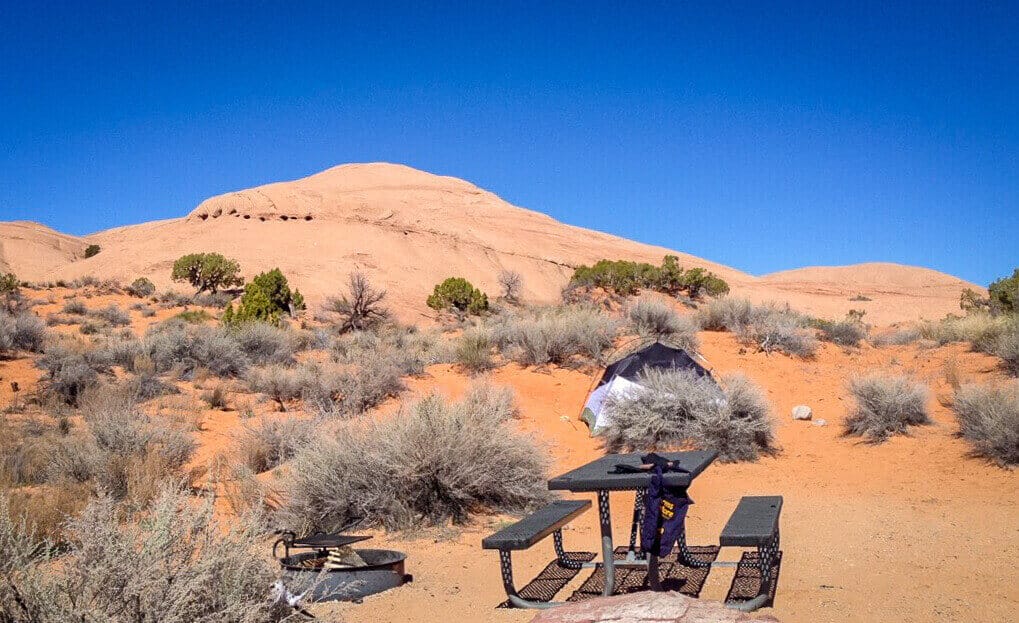
Kaisa blogs at Glam Granola Travel
Save your itinerary and tips to Google Sheets
Easy and free to use, Google Sheets, is the Google equivalent of Excel.
When planning a trip, we tend to use many sources to gather information, which can sometimes mean anything we’ve found has the possibility of being lost or forgotten about.
So inputting all of the information discovered into one sheet makes it simple to access and plan your travel itineraries.
If you’re going on the trip with others, you can also share the sheet and work on it together to help plan the trip of a lifetime!
Creating new sheets for every adventure I go on, I use the same layout each time, and it’s simple to create a new one for every trip you go on. I tend to split the sheet into three tabs; itinerary, things to do/see and sources.
Available as an app, it’s helpful on the go as you’re able to access the sheet wherever you are in the world, even if you have no WiFi.
If you couldn’t fit something into one of the days, for example, you can move your itinerary round, to ensure you’ve seen everything you wanted on your trip! How’s that for cool travel planning tools?
Kim blogs at The Adventure to Me
Shoot for cheaper airline tickets
The cost of your flight is pretty much guaranteed to be one of the most expensive parts of any trip abroad.
Having the free app Hopper up my sleeve has been a life-saver every time I’ve been planning a trip to South America , the region that I cover as a guidebook author and blogger.
Hopper works like a charm. It’s one of my favorite travel planning tools. All you need to do is plug in the dates you intend to fly (or you can set up a few different options if they’re yet to be fixed) and it’ll tell you when it predicts flight tickets will be at their cheapest.
It does this by looking through years of historical flight pricing data and using this to determine whether buying now, three months in advance or even just three weeks out is likely to be the kindest to your pocket and score you the cheapest flight.
Sure, it can be a little bit of a gamble as it’s using historic data, not a crystal ball.
However, it has personally helped me score extraordinarily cheap flights to Easter Island, as well as some pretty sweet deals between the UK and Colombia, so it’s one of the travel planning tools that I now use on each and every trip. It’s a great travel planning app.
Steph blogs at Worldly Adventurer.com
Map your city
One of the best travel planning tools for detailing a city break is the Citymapper App.
I use it almost every day for getting around my home town of London, but it’s equally useful for finding the easiest, quickest, cheapest or fastest way around in any one of 41 cities around the world, including Paris, Berlin, Rome, Istanbul, Vancouver, Tokyo, Sydney, Mexico City and Singapore and other popular destinations.
The app is so brilliant because it merges information on every available type of transport in that city.
Not sure if it’s quicker to get the bus, train, taxi or walk? Citymapper will give you every alternative and show you all possible routes so you can decide.
It tells you how much each type of transport costs and includes helpful hacks, like which exit to take from the station or where to stand on the platform.
It’s also connected into real-time travel updates so it will tell you how long you have to wait for the next bus or if your service is disrupted.
The best part is that you don’t have to BE in that city to use it. Just click the settings button and you can easily switch cities, allowing you to plan your trip in precise detail before you even get on the plane.
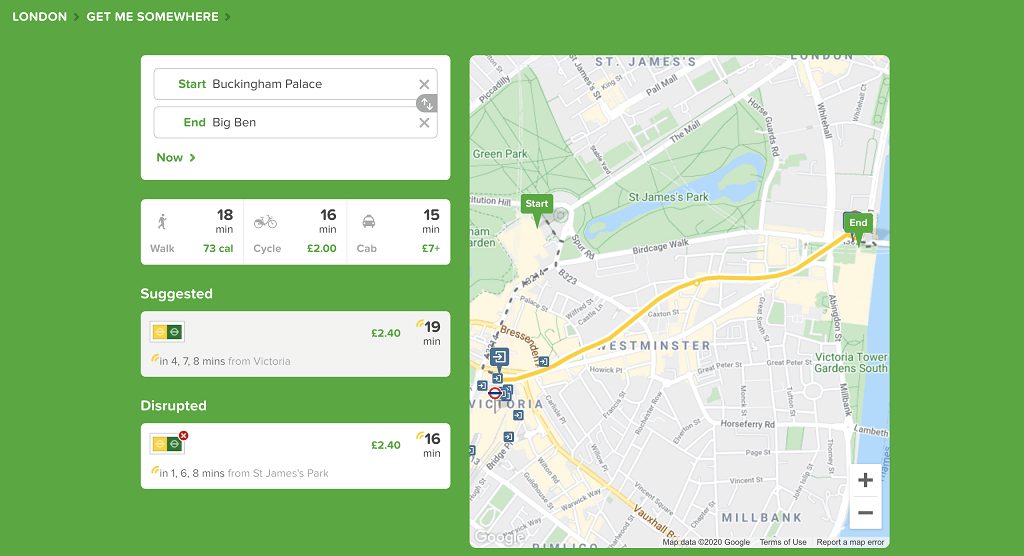
Bella blogs at Passportandpixels
Staying loyal to a specific booking app pays off
For example, Hotels.com, a booking platform (which also comes with an app) where you can find accommodations all over the world offers a program that allows its customers to get a free night after 10 stays.
What’s great is that the value of your free night is based on the average price of 10 properties where you stayed, so if you stay at more expensive accommodations, your free night will cover the price of mid-range-to-expensive accommodation.
Likewise, if you stay at less expensive hotels, the value of your free night will be lower, and you might have to pay the difference if you want to use your free night for a stay at a more expensive property.
In addition, users also collect points which can boost their status over time and provide better prices on many accommodations. The app tells you about your status based on your bookings and overall history.
You should especially follow this advice if you are doing a road trip along the West Coast USA and need to watch your travel expenses.
However, it’s not just Hotels.com that rewards loyal customers. Many other platforms such as Booking.com offer free nights and perks for those users who stay with them for a while.

Daria blogs at The Discovery Nut
Use an itinerary planning app
GPSmyCity is an app that features self-guided city walks in 1,000+ cities worldwide – from Voodoo tours in New Orleans to the best things to do in Moscow . Of course, this essential tool also provides travel inspiration.
The app includes detailed tour route maps and powerful navigation features, to guide you from one sight to the next. You can follow GPSmyCity’s expert guides or take their suggestions and create your own custom walking tours.
It’s a great way to plan and explore all of the best tourist attractions on your own and at your own pace. Another awesome thing about this app…you have the option to “upgrade” any walking tour and download it, so it will work offline.
No internet connection, no cellular data, no problem! (It costs $1.99 per tour to upgrade, or you can get a yearly subscription for $12.99 for unlimited upgrades.) This way you can access offline maps and offers a user-friendly interface.
I, personally, love this because any time we are on a trip and trying to navigate…finding a data connection can be tricky. Plus, having GPS running in the background drains your battery life, big time.
But these are problems you won’t have to worry about with GPSmyCity!

Lindsey blogs at Have Clothes Will Travel
Compare flight prices with search engines
One of the most important things about traveling is finding the best flights possible.
The definition of a “good” flight really depends on your travel preferences. Some people want long layovers to skip out of the airport and do some quick explorations of the city.
While others just want to get there as fast as possible. But something we can all agree on is we want cheap flights!
The best way to do this is with online flight search programs like the popular Skyscanner ( https://www.skyscanner.nl/ ) and the less known flight finder from the popular Youtube channel Yestheory ( https://travel.yestheory.com/flights/ ).
By using both these websites you are able to find the absolute best and cheapest flights for your dates and destinations.
One great feature includes making multi-route plans like flying Amsterdam, to Singapore to Bali to Amsterdam.
Plus, you can see the prices per month and use this to find the absolute best time to fly.
Be sure to use these websites for planning your your leisure or business trip and enjoy great flights that make people look at you in shock when you state how much they were!
Samantha blogs at Samseesworld
Score free resources
The free version of Touring Plans is great to use to plan out your family’s Magic Kingdom itinerary as it is customizable to your needs. You can input things like the rides and attractions you’d like to visit and your desired break times.
It will also make suggestions about the best way to minimize wait times when it comes to the rides. The best thing about it though is that you can get an updated plan if you make changes to it throughout the day.
Websites and apps like these are very helpful, especially those with free versions, and should be used to make your trip planning easier – especially those travelling with young families.

Plan your train journeys
The Man in Seat 61 ( www.seat61.com ) offers a comprehensive guide on train travel around Europe and other continents and is an excellent travel planning tool.
The website was created by an independent traveler who shares information, his experience, as well as gives advice on best train routes all around the world.
If you plan on having a trip with a train anywhere, this is your best option for go-to travel resource, hands down.
You can find various information about timetables, prices, train station and the best train options for you depending on the country you plan on going to.
It goes as far as providing photos of different train cabins or even vending machines for train tickets at particular stations.
Also, you can get detailed instructions on how to book train tickets and where to find official vendors.
It is so detailed that yo most likely won’t even need to check any other resource page for the information you’re looking at.
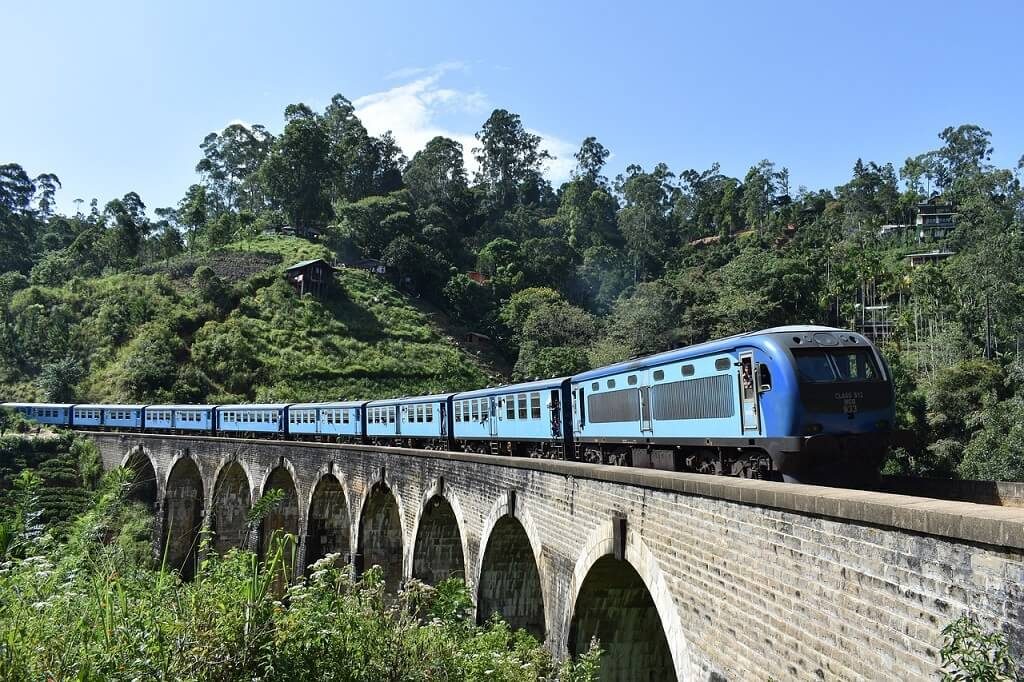
Organize a hassle free-by-day itinerary
My all-time favorite app to use while traveling is Sygic Travel.
It’s completely free to use, and I actually stumbled upon it while trying to plan out my last-minute itinerary while I was visiting Vienna last spring! What’s so great about Sygic
Travel is that it will literally plan your whole day of travel for you. So, all you have to do is have a set plan of everything you want to do and see, and the app will do the rest!
An account is absolutely free to make. Once you make an account, you tell the app everything you want to do, and then you will get an itinerary that will reorganize your day in a way so you spend the least amount of time on transportation.
In addition, the app will give you directions from place to place, and you can let the app know whether you’d like to walk, use public transportation, or drive. It has saved my butt when I’ve been on a time crunch many times, and I can’t recommend it enough!
Use a guidebook as a journal
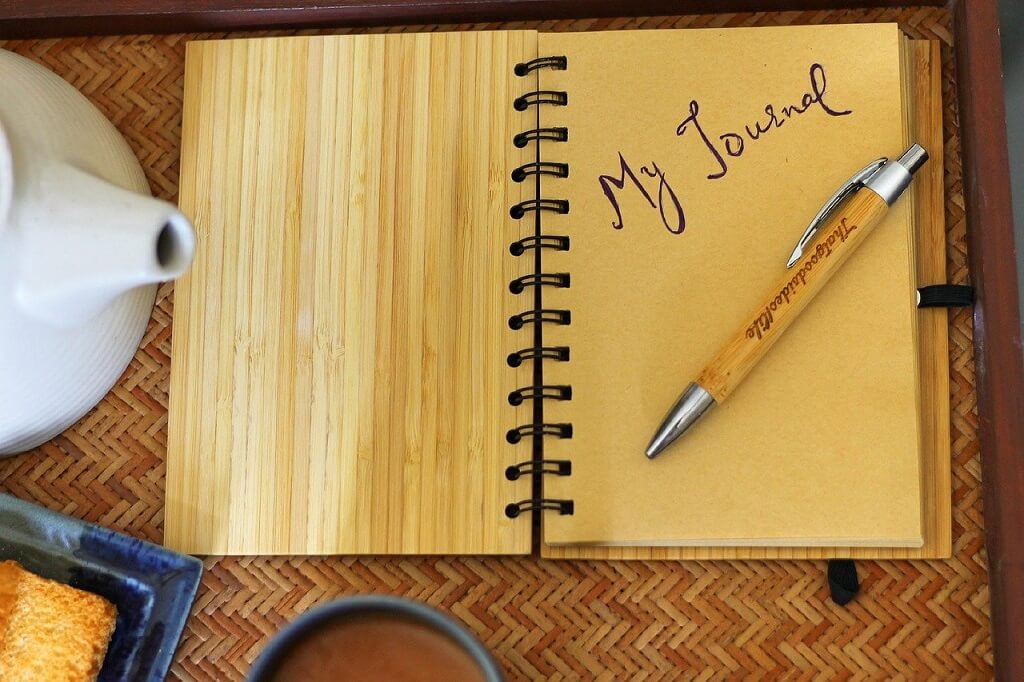
As much as I love technology to help with some travel planning tasks, I’m also old school. I LOVE travel books from Lonely Planet.
They are always my first stop when I’m planning a trip. They do have a decent website, however, I prefer the physicals guide books as these become working documents.
I start on their itineraries page, and them write notes and draw stars on other places I want to add into my own itinerary.
Throughout the book I highlight anything I think is really important as well as cover the pages with other helpful information I have found on notes.
Sometimes I will get a tip-off from a local or another traveler and rather than just write it on my phone, I find it much easier to write it on the margins of the location or note it on the map.
Another advantage is that the book doubles as a travel journal and travel guide. You always know what you did on what date. Here’s a tip. Put tickets in the relevant pages.
My shelves are full of old Lonely Planet guidebooks which also serve as a great mementos of my trips.
Becki blogs at Meet me in Departures
Plan around your travel highlights
Planning a trip is fun, but sometimes it can be stressful as well. What do I need to pack? What area should I stay? What are the main attractions I have to see in this city?
One of the best travel planning tools that has helped me seamlessly plan my trips is an app called Visit A City . The best part about the app is that it’s completely free to use. Visit A City features over 7000 detonations.
Just type in the destination you’re going to and you’ll be given an option of popular attractions in the city, day tours and trips you can take from that destination, things to do in that city, walking and biking tours, and customized itineraries.
My favorite feature about this app is that you can tell it how many days you plan on being in that city and it will create a custom suggested itinerary of the things to do and see for you.
You can even create your own itinerary based on their suggestions on the app as well.
All in all, Visit A City app helps you create a personal travel guide that’s packed with valuable information right on your phone.
Disha blags at Disha Discovers
Get from point A to point B many different ways
One of the most useful travel planning apps I have come across is Rome2Rio .
The app lets you find routes to some of the most remote places.
The app has additional local bus, train and ferry route details that even google maps doesn’t know about. With direct links to timetables of local transports, the app really lets you plan for the off-the-beaten path hidden gems.
Say you want to go from Havana to Hanoi, New York City to New Delhi or anywhere else.
This cool little app will not only show you all the transportation options and alternative routes, it’ll tell you the itineraries, the cost and even the seasonality! Just plug in the trip origin and destination and see all the different ways to get there.
Many times I’ve saved tons of cash by finding an alternative airport to fly into then taking local transportation to my final destination.
Or, I found that I can get somewhere by a different option like a ferry making the trip that much more fun. I’ve even use the app to help me identify a brand new destination to visit that I would not have thought of before.
How cool is that!? This is definitely one of my favorite travel planning apps.
Merryl blogs at Merryl’s Travels and Tricks
Planning your trip ahead of time can make all the difference between a hectic, stressful trip and a relaxing, fun-filled vacation. That’s where mobile travel apps come in.
We asked our fellow travel bloggers what their recommendations for the best travel apps for Europe, Asia, and the Americas are. Here’s what they had to say.
The Best Travel Apps for Europe, Asia, and the Americas
Find the perfect venue.
Drinkspal is the perfect mobile app for anyone visiting a new town and looking for the perfect venue.
You can filter down on what you’re specifically looking for, so it could be a pub that has WiFi within a 5 mile radius, but then you can further filter to find ones that are dog friendly, sell bottles of prosecco at under £15, sells Thai food and has a beer garden.
While many apps or sites list the different venues in a city you might visit, none have successfully allowed you to filter down until you reach the perfect option.
But the best little addition is the drink deals and highlighted bars that are offering happy hour, meaning you can pick the bar in your area that will save your pennies, meaning your money can go towards the important things in life, such as activities and experiences.
Obviously, this is a completely free app and doesn’t take up a huge amount of space on the phone.

Tom Bourlet blogs at Spaghetti Traveller .
Complete immigration forms on line
U.S. Customs and Border Protection created the Mobile Passport app so that passengers can complete immigration forms on their smartphone and use a shorter line when they arrive in the United States.
You will love the time that it will save you! It’s similar to the Global Entry program but it is free! Unfortunately, only US Citizens and visitors from Canada can use the app at select airports and ports, but they are looking to expand the program.
You can download the app and set up your profile before you travel.
Once you land, answer the standard questions inside the app. After you have WiFi or data on your phone, submit your answers.
Within a few seconds, you will receive a receipt with a barcode that is valid for four hours. Once in the immigration hall, find the designated mobile passport line.
When it is your turn, show your passport and the barcode to the customs officer. It’s that simple!
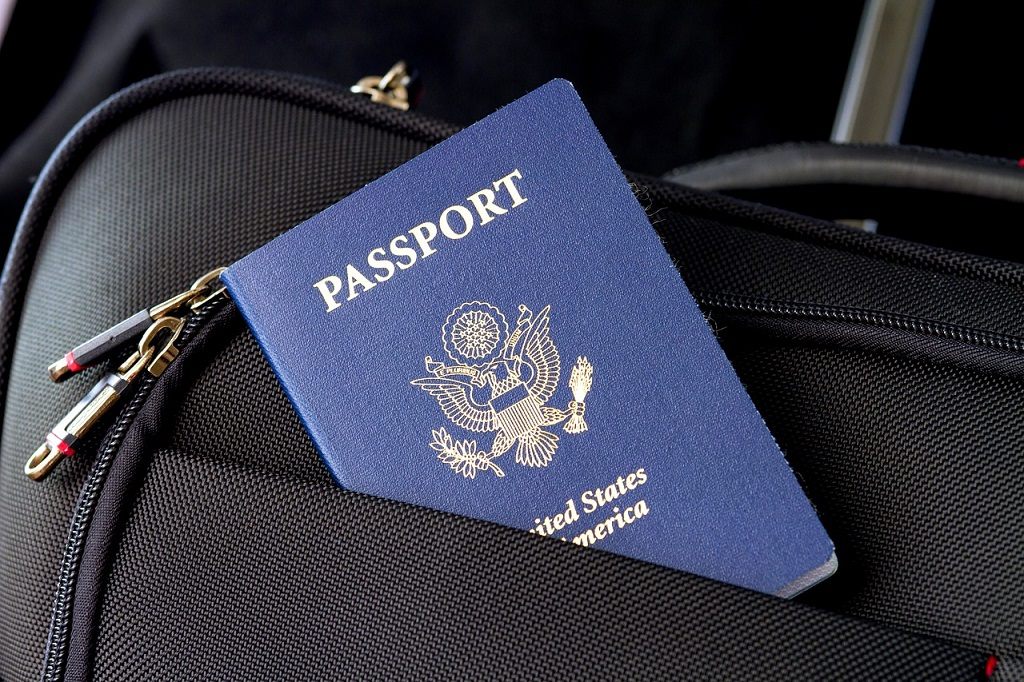
Anisa blogs at Two Traveling Texans .
This travel search engine is available in the form of an app making finding cheap flights on the go pretty simple. All you have to do is entire your dates and destination and all the work is done for you.
The app isn’t unique to searching for just flights as you can use the app for hotels and rental cars. What I like about the app is the ability to search to anywhere from your chosen destination should you need some travel inspiration.
There is also the option to search by month, which comes in handy when doing some travel planning.
If you do know your exact travel dates however, the app’s easy interface makes it easy to see all pricing and flight details brought up from the search.
Skyscanner is one of the best tools to help you get great travel deals by finding the best routes, best flights and best time to score your best travel experience.
The app also provides recommendations for last-minute trips with pricing for a variety of destinations. Skyscanner is free to download.
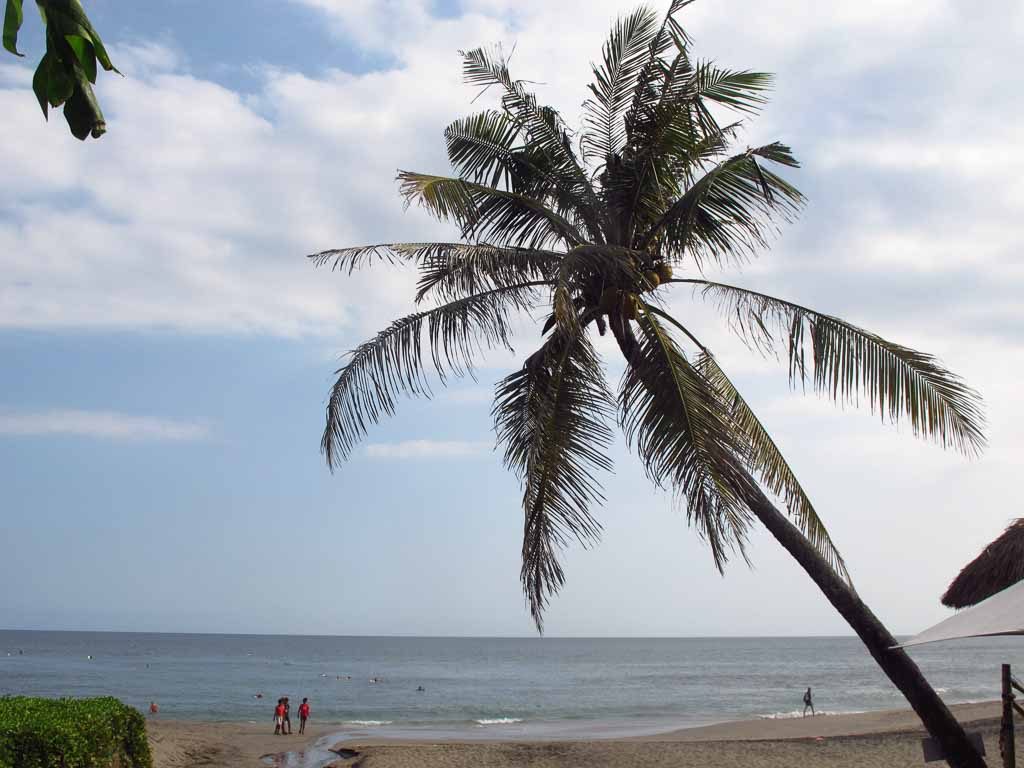
Rai blogs at A Rai of Light .
Get accurate directions quickly
The best travel app that I love using is Google Maps. I’ve used it all over Europe and North America and think it’s the most reliable directions app.
My favourite and most used feature of Google Maps is the directions functionality.
Just input the address of wherever you want to go and it will give you directions in multiple formats: walking, cycling, driving, public transit and rideshare (if available).
The directions are different depending on your mode of transportation and are super easy to follow.
Google Maps is also great for planning a route and we use it this way all the time for planning our motorcycling trips.
You can add multiple destinations and stops in between and Google will tell you how many kilometers are between each stop as well as the elevation change. Very handy on a motorcycle!
I’ve even used Google Maps offline when traveling, which is great if you don’t want to use cellular data or don’t have an internet connection.
Download a map ahead of time and you’ll be able to use a map and track your location without using cellular data.
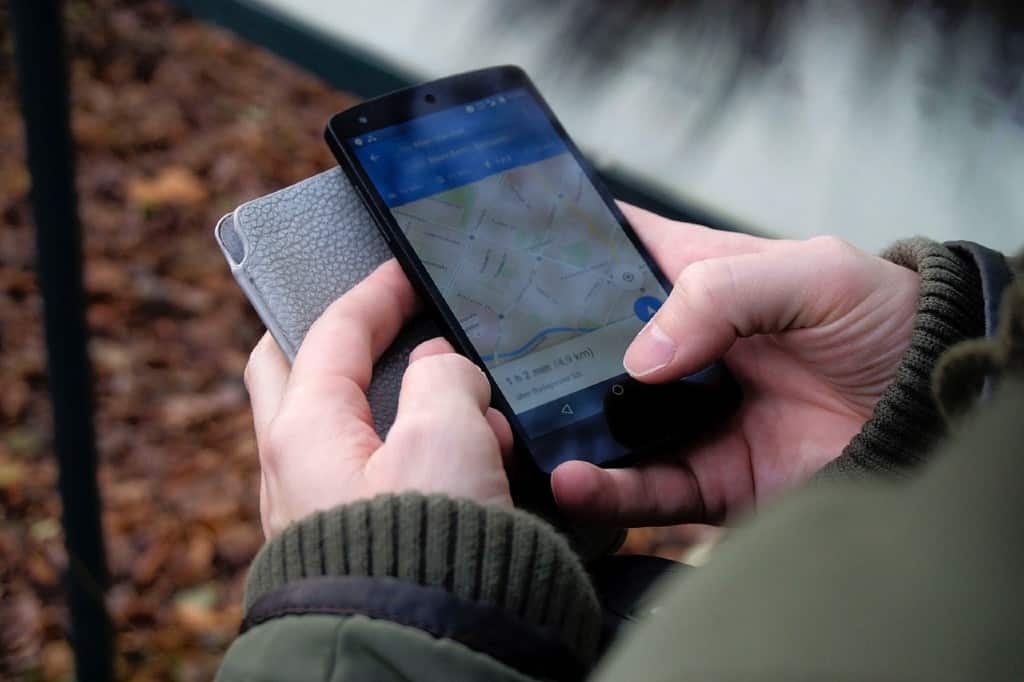
Lesley blogs at Freedom56 Travel .
Adam Groffman blogs at Travels of Adam .
Keep your expenses in check on the road
Our recommendation for the best travel app for Europe, Asia, and the Americas is the travel budget app – Trail Wallet. It was created by travel bloggers Never Ending Voyage several years ago.
As bloggers on the road continuously, it is important for us to keep to a budget. Our first year we used an Excel spreadsheet and to be honest it was time consuming.
Trail Wallet has simplified our life on the road whilst keeping our expenses in check. We create a trip, which for us is a year, add in our daily budget, the categories and the currencies we will be using.
As soon as we have an expenditure we enter the cost into the app, into the category, add the amount, and press save and away we go.
The app calculates our daily spend, what is remaining, our average spend and our total for the trip. We can even add a note, e.g., the restaurant we had lunch in.
We can even view our expenditure in a graph. The app cheekily gives us a reminder if we blow the budget for the day.
Trail Wallet has been a time saver for us. It is available as a download from iTunes and is suitable for iPhones and iPads.
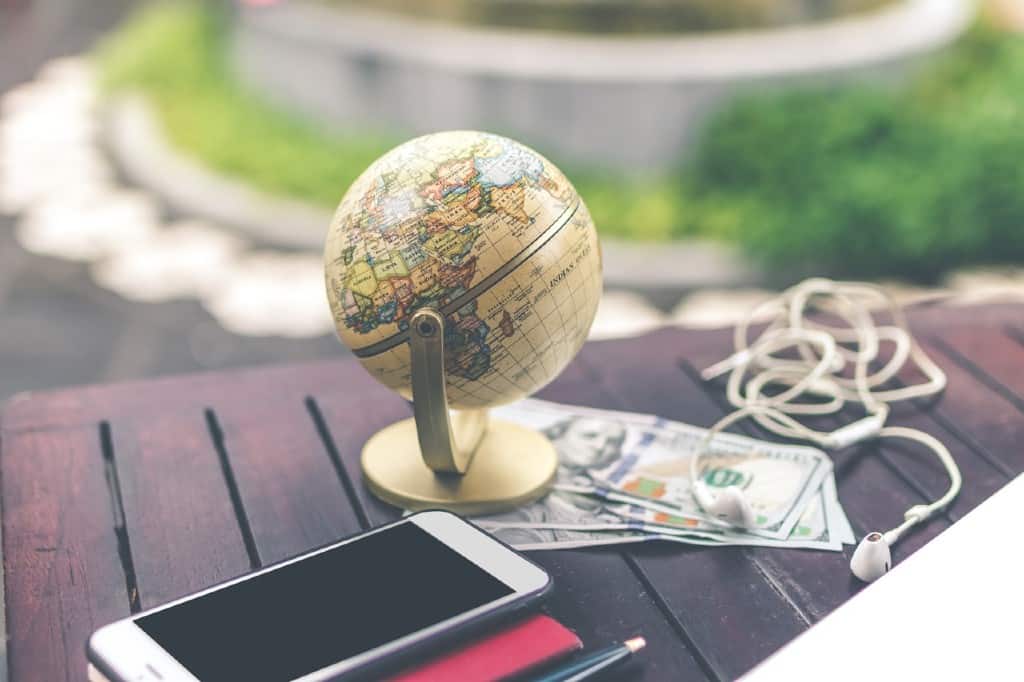
Jane Dempster-Smith blogs at To Travel Too .
Listen to music on the go
In general, music is an essential part of my life. I like to listen to music in the background to match my mood and to motivate me to get things done.
When I first started using the Spotify app, I got hooked because it solved different problems for me. First, it’s pretty easy to create playlists and categorize my music accordingly.
Second, I have access to my music library with all my devices, and everything gets synchronized no matter if I’m using Android or iOS.
Third, Spotify offers me several ways to discover new music and keep growing my library, such as a personalized playlist created just for me or by showing me my friend’s public playlists.
Also, as you’ve probably already guessed, I pay for a Premium subscription so I get some extra perks, like no ads. Plus, I’m able to listen to my music offline as well.
The two playlists I always have on my phone are my Roadtrip and Running ones. The first one has songs that are fun to listen to while on a ride, and the second is mostly upbeat pumping music to drive my pace while jogging.
Also, sometimes when I travel, I search for music that relates to a destination to enhance my travel experience and even give me some insight into the local culture.

Bianca blogs at Nomad Biba .
Converse in any language
Google Translate has been an absolute lifesaver on my travels and is my top recommendation for the best travel apps for Europe, Asia, and the Americas.
While I try to learn a few words or phrases in the local language of the country I’m visiting, there are situations that come up that just can’t be solved with “delicious” or “thank you very much”.
With Google Translate, you can type in the phrase you’d like to say in English (or your native language), and it will translate it into the language of your choice.
Say you want to be sure the meal you ordered is vegetarian, or you want to know what time the next bus arrives.
You can choose to either have your phrase spoken so the person you’re interacting with can hear it, or you can show them the translated text.
My husband and I have used this to flag down a local man in Vietnam and tell him, “Our motorbike has a flat tire,” to which he helped us back to his home where he fixed the tire and his wife served us noodle soup.
Sometimes you have the opposite problem: You want to know what something in another language means.
Perhaps you’re reading a menu and you want to know exactly what you’re ordering.
You can either type in what you see, or you can use the photo-to-text feature. Simply snap a shot of the text in question, highlight it, and it will be translated for you.
This is especially helpful when you’re traveling in a country, like Thailand, where the alphabet is totally different from what you’re used to and typing it would be extremely difficult.
One thing I’d recommend is when you’re planning a trip, be sure to download the language package for the country you’re visiting ahead of time.
That way, you can use the app even if you don’t have cell service or Wifi (aka you’re on the side of the road in the middle of nowhere and desperately need directions!).

Katie Diederichs blogs at Two Wandering Soles .
Plan trips and share details with others
Sometimes the most useful things are free and right front of us. One such thing is the Apple Notes app. It’s my favorite app for planning my trips. I start it with a list of blogs to read. Gradually I build it up to have all the information in one place, including:
- Airline, car and hotel booking numbers, timing and other notes.
- Lists of things to see and places of visit
- Restaurant recommendations
During the course of my planning, I shortlist the categories and end up with an itinerary, which I refer to during the entire trip.
Some of my favorite features are:
- The ability to share the notes doc with everyone on the trip so we can all use it simultaneously.
- Notes is easily accessible and everyone with an iPhone has the Notes app at their fingertips – no need to install or learn a new app.
- The app is simple to use and has all the features I’ll ever need in my planning – tables, pictures, formatting etc.
- Notes syncs to iCloud when a connection is available. All the notes are available on all my devices, seamlessly. It doesn’t need WiFi. It always just works online or offline.
It really makes staying organized when I travel a snap!

Jyoti blogs at Story at Every Corner .
Convert currency on the go
GlobeConvert is a fantastic little app for travel. When you’re moving through multiple countries it can be hard to keep up with exchange rates.
In Southeast Asia one day we were in Cambodia using US Dollars, the next in Vietnam where it was nearly 30,000 Dong to the Pound! That takes a lot of working out.
A conversion app like this shouldn’t be that noticeable. It needs to do its job and nothing more.
For this, GlobeConvert is fantastic. It’s really fast, has large touchscreen buttons which make it easy to use and resets with one touch (quick tip, hold down the backspace key to reset all digits rather than tapping multiple times).
Importantly, it also doesn’t need to use data. You can refresh the exchange rates when you have a WiFi connection, and after that it will work without using expensive roaming charges.
You can add favourite currencies if you’re traveling to a lot of different countries and quickly swap the exchange rate between your home country and others.
It seems quite a boring app to recommend, but once you’ve used it you’ll see exactly why I won’t use a different one ever again.
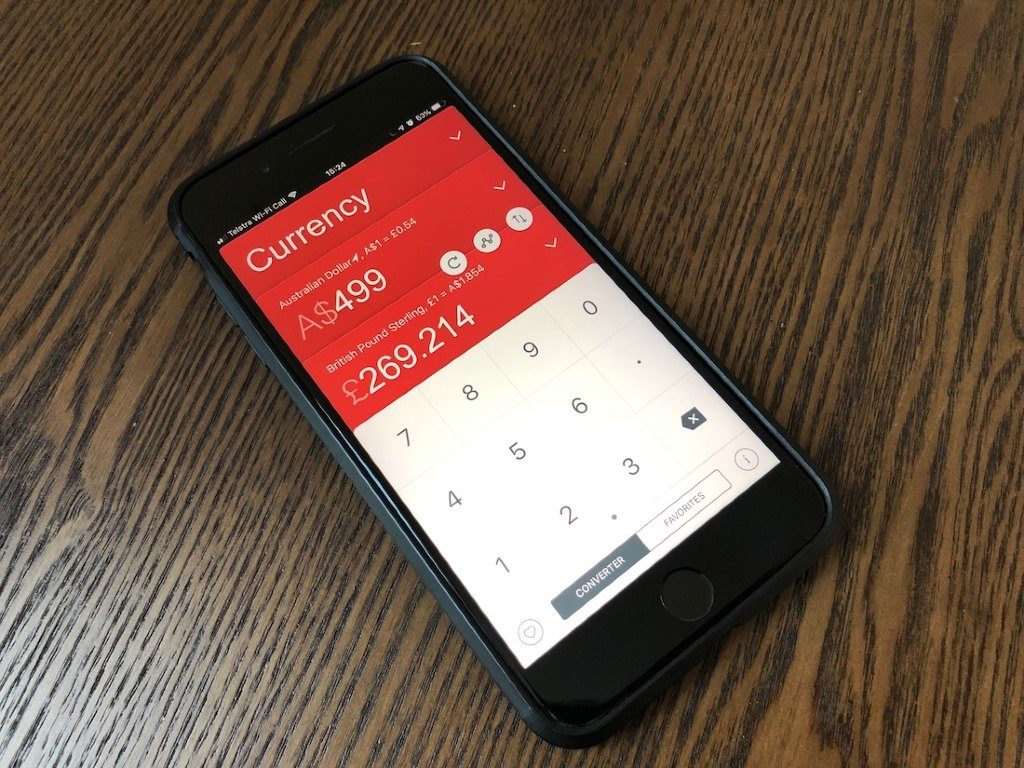
Ben Reeve blogs at The Sabbatical Guide .
Hail a cab in China (there’s an English version)
If you are traveling to China, then you need to download the Didi app. In short, Didi is the Chinese version of Uber/ Lyft, and it’s the most popular ride-sharing app in China.
Similar to Uber/ Lyft, you can use Didi to book different types of cars and services. The major difference is that Didi also calls taxis for you in addition to regular drivers and some services provide a premium service.
Without Didi it’s virtually impossible to flag down a taxi on the streets in China now.
Once you download the Didi App (there is an English version) you can register with your non-Chinese phone number or Wechat, another very important app in China that’s similar to WhatsApp but much more.
There are four different categories on Didi, Luxe, Express, Premier and Taxi.
Taxi is pretty self-explanatory and actual fare is charged by meter. Luxe is when you want to schedule your ride with a luxury car and suited driver and it’s best for business purposes.
Express is similar to regular Uber and under Express there is “Express Pool” like Uber Pool, Express (like regular Uber/Lyft) and “Select”, which has newer cars and more experienced drivers.
Premier is a service with professional drivers and drivers with 5 stars and hence more expensive. Payment with Didi is simple, you can add a foreign credit card or simply use cash.
Most Chinese people use Ali pay or WeChat Payment but as a traveler, you may not have those set up, so cash or credit card works better.

Serena blogs at Serena Lenses .
T ranslate in China and elsewhere
Baidu Translate is a real lifesaver during your trip to China and is my recommendation for one of the best travel apps for Europe, Asia, or the Americas.
You don’t have to be worried about the language if you download this app before your trip. It’s a voice translation app that works for text-to-text translation.
There are many other popular languages you can translate from English by using this app. Baidu Translate is approved in China, so there’s no chance to be blocked.
You can download it for free on your iPhone or any Android phone. I loved most the voice translation feature of this app. Just turn on the speaker before speaking in English, and it will accurately translate in Chinese and vice versa.
This app also supports camera translation and can translate the text from the image. However, all features are only accessible when you’re online.
Baidu Translate doesn’t work in an offline mode; you must have a good Internet connection when using this most useful and best voice translation app based in China.
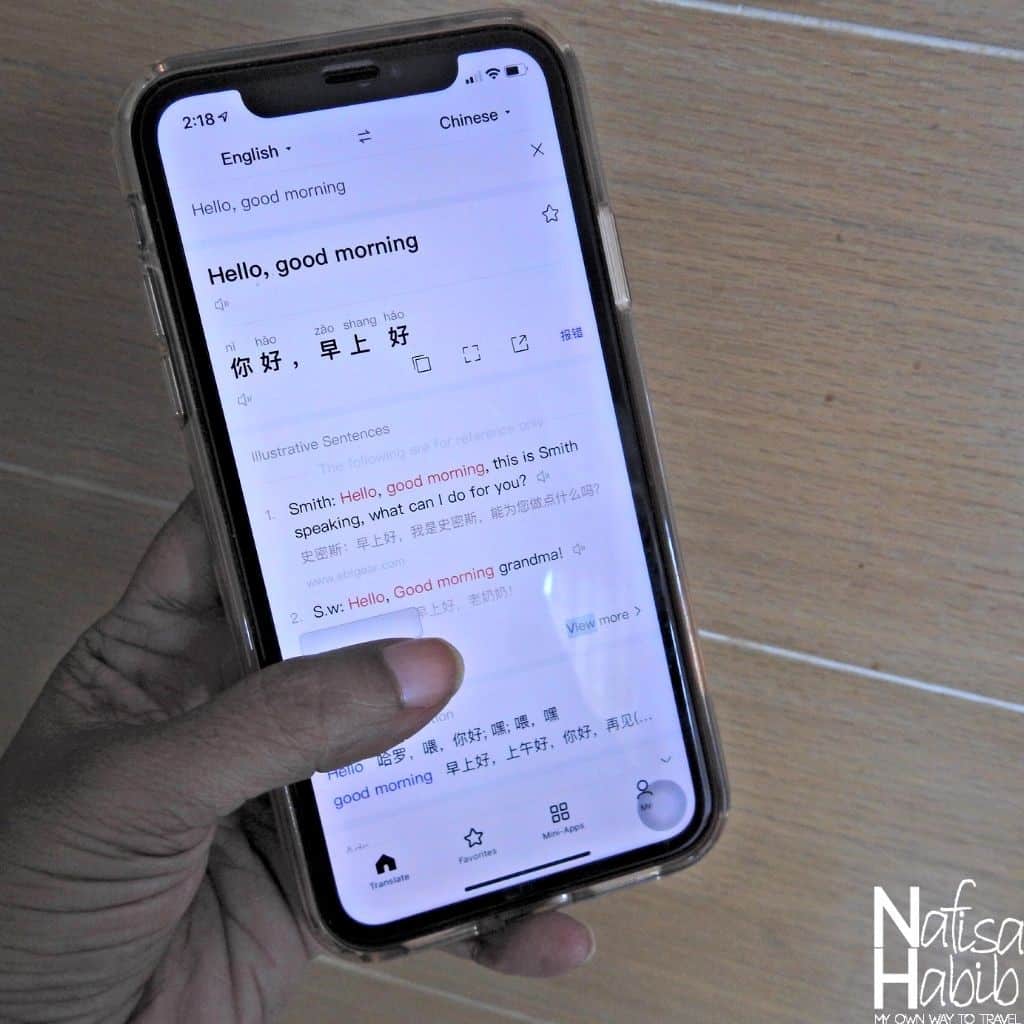
Nafisa Habib blogs at My Own Way to Travel .
Count your daily steps and stay motivated
Everyone likes getting something for nothing, am I right? My current favourite travel app is the Sweatcoin app. Sweatcoin converts your daily outdoor steps into currency, which can then be traded in for goods, services and gift cards.
The reason I love this app for traveling is because that’s when I walk the most. Whether you are out exploring a city on foot or hiking in the mountains, every step you do is a little piece of gold.
To start earning things for steps you would be doing anyway download the Sweatcoin app and create an account. The app will run in the background on your phone and use your phones GPS signal to track your steps. You don’t need to have mobile roaming turned on.
5,000 daily steps become 5.00 coins, 10,000 become 10.00 and so on. There are different monthly subscriptions that enable you to convert more steps per day.
Each subscription charges you a varying amount of coins each month (all made from your own steps – no real money is involved).
This app is a great app to motivate you to move even when you are at home and why not start earning something from your steps.
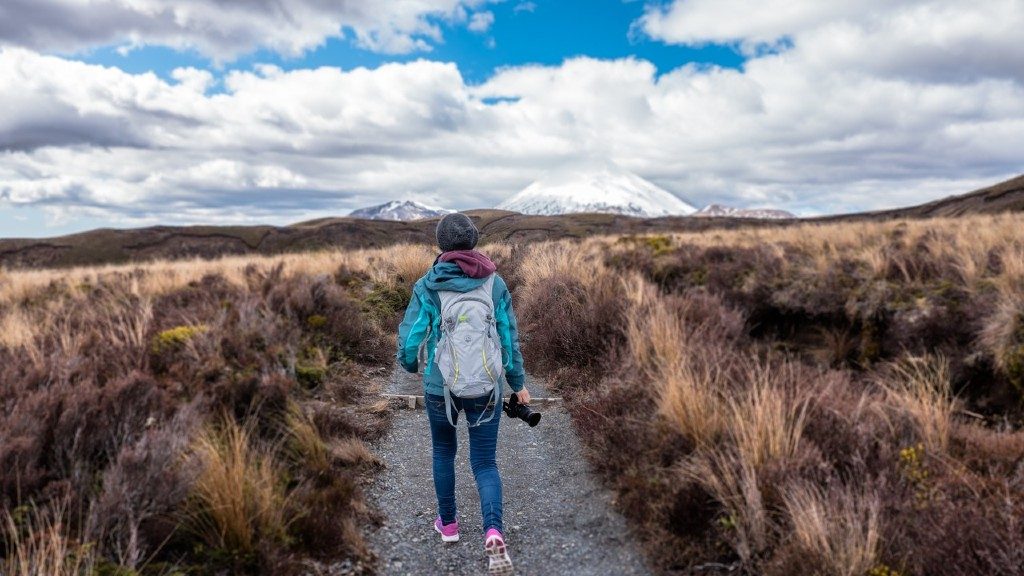
Erin blogs at Curiously Erin .
Plan your road trips
There’s nothing better than a good road trip.
Stock up on the snacks. Put together an awesome playlist. Gather a couple of friends, or go it solo, and hit the open road.
The key to a successful road trip is the planning, which makes Roadtrippers the perfect companion, especially since it’s web AND mobile friendly!
You don’t have to think about how to fit everything in because Roadtrippers takes all of your bucket list locations and creates the best possible route between them.
A huge bonus is the app also estimates how many miles you can expect to drive, AND about how much money you’ll spend on gas.
These are two factors that are very important when it comes to budgeting out a road trip, and two things you don’t need to worry as much about thanks to Roadtrippers.
Once you’ve planned out your trip you can then save it, share it with friends, and even edit it on the go if you have any last minute changes!
An additional perk, and probably one of the best features in my opinion, is the ability to find “hidden treasures” along your route, all thanks to the phone navigation synching which can help you find things in your own city, or in the locations you travel through, that you didn’t even know existed!
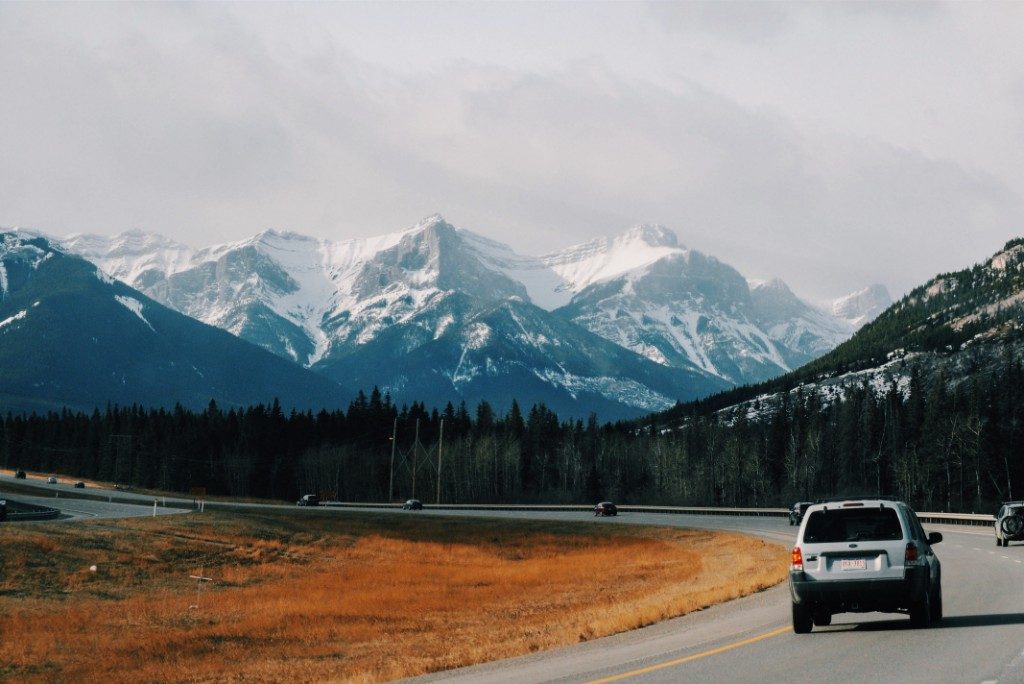
Lindsey Messenger blogs at Seven Day Weekender .
Get customer reviews before you commit
We’re full-time RV travelers and are always looking for tools that can help make our road trips easier to plan. One of my favorite apps is TripAdvisor. I love that I can use it on my phone or laptop to accomplish more than one task.
The first thing I use it for is to find campgrounds.
TripAdvisor has such a large collection of reviews that I always feel confident in the location before we show up.
Another terrific feature of the reviews functionality is that visitors can post their own photos.
This way you see what a resort looked like last week, not when it was first opened.
TripAdvisor also has a feature that allows you to message other users if you have questions on their reviews. I’ve actually used the feature a few times and have almost always received an answer.
Finally, TripAdvisor is great once we’ve arrived at a destination to help us find great activities and restaurants.
The other users always provide helpful tips for visiting different destinations.
I also really appreciate how the restaurants are sorted by type of food and price so I can find those that best fit our needs at the time.
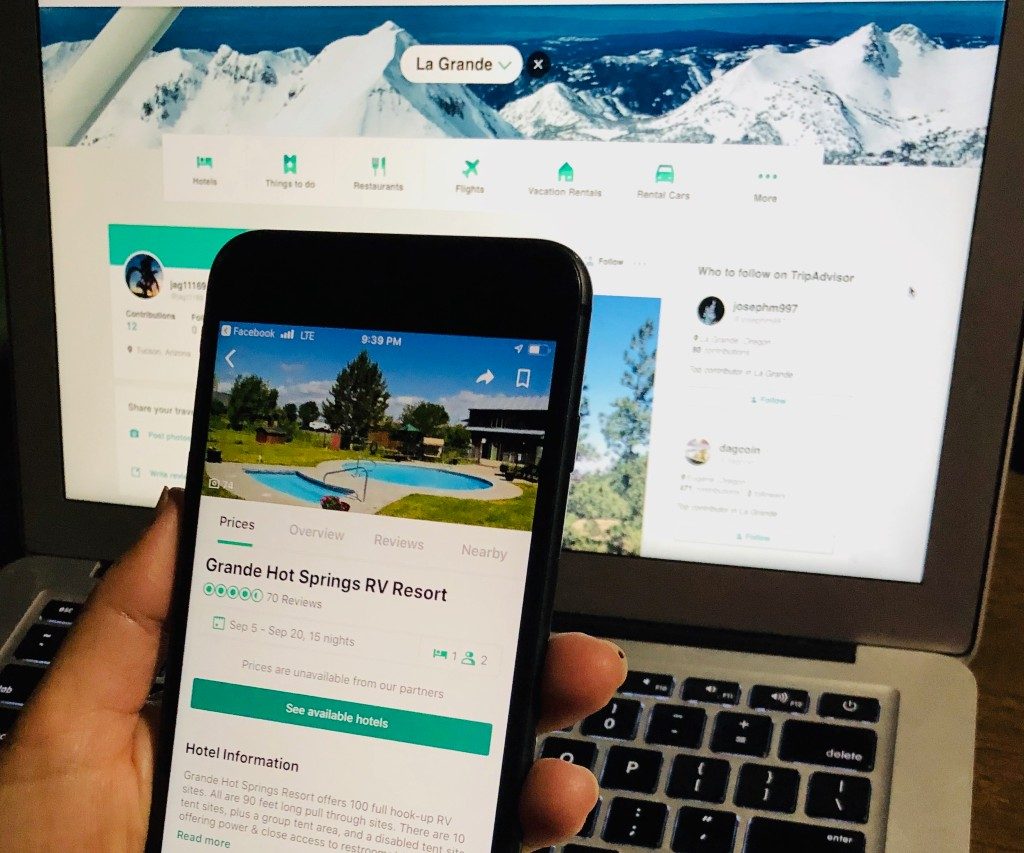
Julie Chickery blogs at Chickery’s Travels .
One app that we always use on our trips and suggest everyone download is Maps.me. Maps.me is a free app that provides offline maps to users of Android, iOS, and Blackberry.
When we install the app, no map comes with it, but we only have to select the region and the country we want and download it. Being able to use all the maps information without needing to have mobile data is the biggest advantage of Maps.me.
And, it’s a crucial advantage if you don’t have a local sim card and with the steep prices of roaming data.
With Maps.me you can search and navigate to hotels, attractions, streets or whatever you are looking for.
One thing that I really like about Maps.me is how easy it is to search hotels within the app. The maps show the hotels that are on booking.com and gives information about rating and pricing.
This is great if you arrive at a town without a hotel booked.
Another thing Maps.me excels at (I believe it’s even better than Google Maps) is navigation on foot.
Maps.me has an incredible amount of trails marked and a remarkable detail, even in very remote locations.
When doing a hiking trail, I prefer to use maps.me, even if I have mobile data because it usually has the trail marked while google maps sometimes doesn’t.
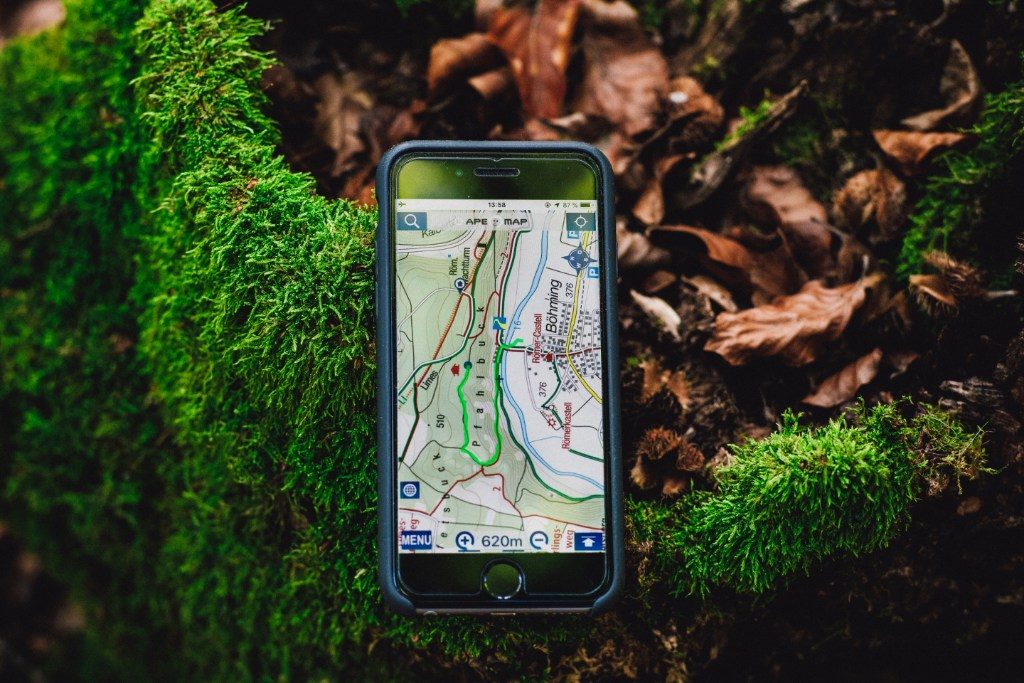
Jorge and Claudia Bastos blog at Travel Drafts .
Find off-the-beaten-path locations to include in your itinerary
Here is yet another Maps.me recommendation.
Whether I’m planning a trip from home or while I’m already on the road, my number one travel tool is the free app Maps.me.
As you probably already guessed, Maps.me is an app that provides a map. It’s comparable to Google Maps. Except, Maps.me is much more accurate when it comes to biking and hiking trails and navigating in lesser developed countries in general.
Seriously, anything from small street vendors, hidden waterfalls, local supermarkets, and unknown gas stations are marked on Maps.me. Are you looking for off-the-beaten-path hikes, deserted beaches, or viewpoints?
I guarantee you can find them on this app. I even use Maps.me to navigate hikes that normally require guides! How’s that for one of the coolest travel planning tools!
When I’m planning a trip I always mark all the places I would like to visit on the map to get a general idea of how far apart they are.
Next, I use Maps.me to make a rough itinerary, and lastly, I use Maps.me to navigate to all my destination without using data!
Because the best part about Maps.me is that you can download the map of your destination and use all of Maps.me’s features when you’re offline, making Maps.me the perfect app for both planning your trip and for navigating during your trip!
Lara blogs at Bothe Feet on the Road
Organize your multi-city trips
Organizing a multi-city, multi-country trip can become really stressful really quickly.
I used to rely on emails, individual apps, and even printouts to try to keep everything organized, but inevitably things would get overlooked, or I’d be missing a crucial bit of information along the way.
Just before our last large overseas trip to the US and New Zealand, I heard about Tripit and it was an absolute game-changer!
We were organizing things at the last minute and it could have been a really complicated job – but Tripit made it easy. As soon as you book anything – accommodation, flights, car, etc. – all you need to do is forward your confirmation email to Tripit and all the information uploads into the app automatically. Magic!
You can enter things manually too if you prefer, but when booking multiple flights, places to stay and cars, it was incredibly useful to just flick an email through and everything would be input automatically.
Having all the information in one place also helped spot any gaps in our itinerary – like nights that still needed to be booked! And having all our booking references and flight times in one place while we were traveling was a real godsend.
You can even access it while offline! I still use the Tripit app now, even when booking short breaks, as it becomes a handy reference point of your past travels too!
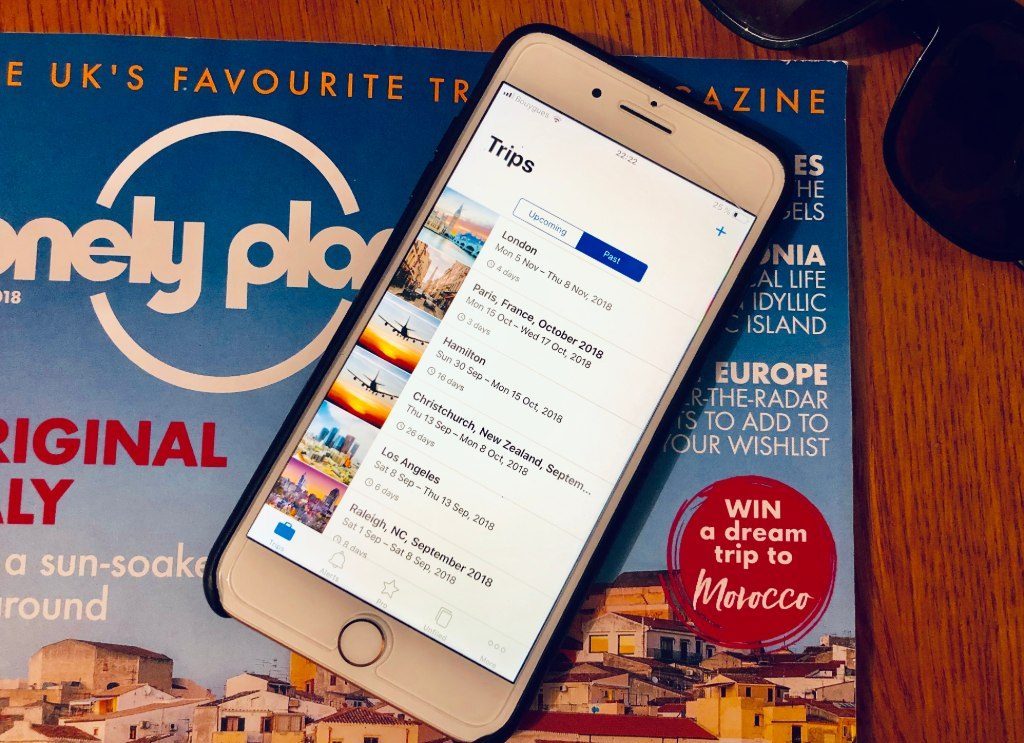
Nadine Maffire blogs at Le Long Weekend .
Stay vegan while traveling
As a vegan world traveler, HappyCow is the app that I use the most when planning where I am going to eat during my travels. HappyCow is a global directory of vegan restaurants, vegetarian restaurants, and restaurants with vegan options all over the world.
It’s crowd-sourced, which means that users are adding new entries, photos and restaurant reviews every single day.
The HappyCow website has been around for nearly 20 years, but recently it has grown exponentially, thanks to the increased interest in veganism and plant-based eating.
And of course, now that there’s an app version, it’s even more convenient to use.
During the trip planning phase, one of the first things I do is take a look at HappyCow to see what kind of dining options there are in my destination.
But even if I don’t have time to do much pre-trip research, the app makes it really easy to find veggie food on the go.
Just click the “show everything nearby” button, and you’ll instantly see all the dining options that are closest to your current location, along with photos, user reviews and opening hours.
Even if you don’t identify as vegan or vegetarian, HappyCow is a great way to discover healthy alternatives to the fast food that it’s so easy to fall back on when traveling.

Wendy Werneth blogs at The Nomadic Vegan .
Locate vegetarian options beforehand
More Happy Cow raves! If you are a vegan or vegetarian traveller, then you might already know it’s not always easy to find hearty food.
The HappyCow app flags all the local vegan and vegetarian restaurants, along with places with great options and is one of the best travel planning tools for vegetarians.
Users can leave reviews to flag issues and give advice – for example, ‘ask for the veggie burger without mayo to make it vegan’, ‘best place for dairy-free ice cream’ and directions to hidden food stalls.
You can easily search for places in order of which is closest to your location and review the ratings, before bringing your restaurant of choice up on the map.
In challenging countries, this can save hours of researching meal times beforehand. This has been a lifesaver for me, particularly in countries known for their meaty diets.
For example, when travelling in Tokyo I discovered a whole network of amazing, vegan Buddhist restaurants through this app which I’d have never have found on foot.
Cassie blogs at Cassiethehag
I discovered Evernote about 5 years ago and fell in love with it instantly.
Evernote is a note-taking app with a free version and premium version with more functions and abilities. I like this app mostly because it’s simple and easy to use.
That’s the most important thing for me. I’m able to quickly bring up the app, jot down notes, and have all my notes sync across all my devices.
So something I type at home on my Evernote desktop app will show up on my phone when I’m out shopping or traveling.
Another big thing I love about Evernote is its ability to create folders for notes and be able to easily move them around when needed.
For example, when I travel to several cities/countries at a time, I like to create a new folder for each country, and within each folder, I can create separate notes that contain itinerary info, things to-do list, and a journal where I can document my trip!
Evernote is integral to keeping me organized while I’m traveling. If you have the premium version, you’re also able to upload pdf files, photos, itineraries, etc.
I can’t do without it in life! There are many note-taking apps nowadays but if you’re looking for simple and effective, Evernote is all that!
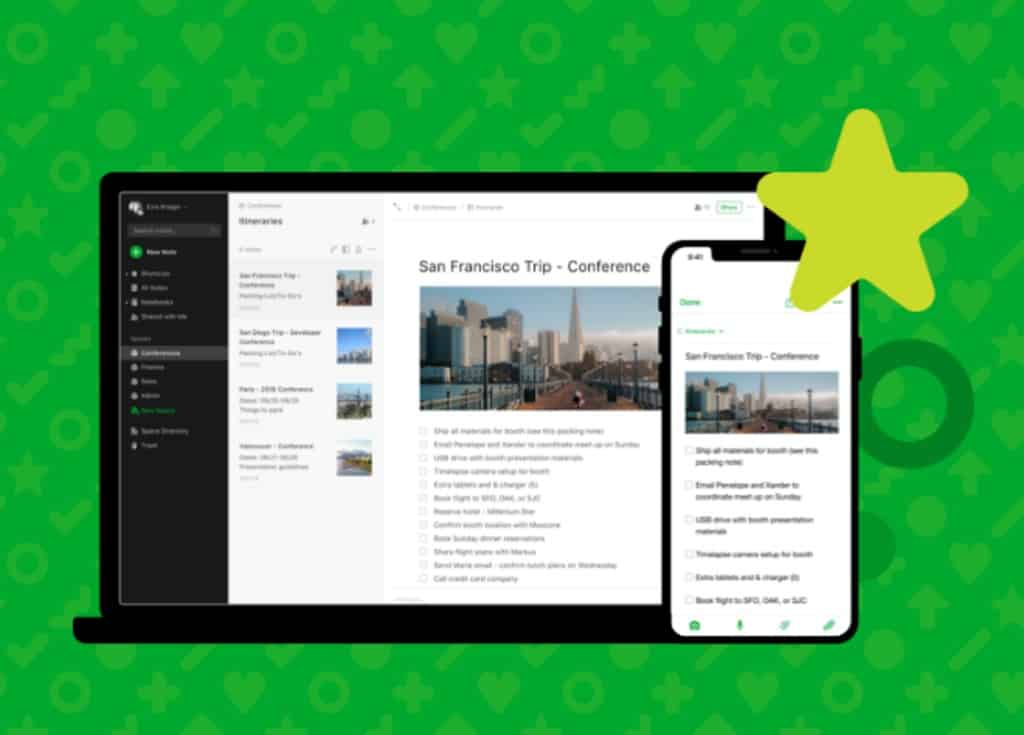
Jason blogs at Mint Habits .
Did we miss any? Let us know what your recommendations are for the best travel planning tools and apps.
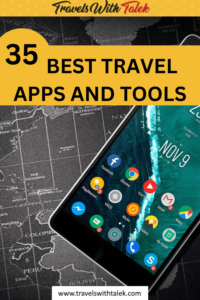
If you’re looking for more travel tips, you might like this post:
- Travel Safety Tips You Need to Know
Here is a list of great reference books on travel planning tools and apps. Real time and money savers.

BTW, if you are getting ready for your trip, make sure to take advantage of these useful, money-saving links to book your trip:
- Research and book your flight with Skyscanner . I have found them to be the best because they list all airlines including the budget ones. You are always sure of having researched all options.
- For car rental around the world, Discover Cars has flexible pickup and drop-off options, I recommend Discover Cars .
- Book your accommodation with Booking.com . I find they have a wide selection and a nice, user-friendly, transparent website.
- Protect your trip and, more importantly, protect yourself with travel insurance. I use Travelinsurance.com and have been very happy with them.
- Looking for a small group tour to unforgettable destinations with top professionals? Intrepid Trave l is your choice.
- For more general tours to any destination or attraction, book with Viator . Check them out.
- Need a visa? Get your visa for all countries with Passport Visa Exp ress.
- Looking for a cool walking tour to explore a city? My favorite walking tours are offered by Take Walks.
- Food and drink tours are the best way to enjoy a city. And Devour Tours are my favorite.
- Looking for a good VPN to protect your security, privacy and freedom online while traveling? Nordvpn is your best option.
- The best and most economical way to stay connected while traveling is with an Airalo eSIM.
I personally use, and can recommend, all the companies listed here and elsewhere on my blog. By booking through these sites, the small commission we earn – at no cost to you – helps us maintain this site so we can continue to offer our readers valuable travel tips and advice.
Want more travel planning tools and tips? Check out these handy guides or this post on travel apps for your international trips .
Talek Nantes
7 thoughts on “35 best travel planning tools and apps”.
Thank you for reading!
what a great list. Would also like to add ATM Fee Saver mobile app – it gives a list of ATMs in foreign countries with no fees or lower fees than others along with withdrawal limits etc., found it quite helpful while travelling. worth to add it to your list!
Thanks. I’m always learning looking for new tips.
Awesome Post… Like it.
Great post! I would perhaps add https://holiwise.com/ – they help you find travel destinations based on your preferences.
Thanks for the tip and for reading.
Leave a Comment Cancel Reply
Your email address will not be published. Required fields are marked *
This site uses Akismet to reduce spam. Learn how your comment data is processed .

Disclosure: As an Amazon Associate I may earn from qualifying purchases. Posts may contain affiliate links. If you click on one of them, we may receive a commission at no cost to you.

JOIN OUR NEWSLETTER

Lets Connect
Privacy policy.

Travel Plan Toolkit
- What is a Travel Plan?
- Do I need a Travel Plan?
- Why would I need a Travel Plan?
- When would I need a Travel Plan?
- What happens to my Travel Plan?
- Supporting initiatives
- Policy vault
- Best practice
- Useful links
- Example measures
- Jargon-buster
- Introduction
- The Travel Planning process
- Registration and Sign-in
- About Travel Plans
- Find a Travel Plan
- Implement a Travel Plan
- Design a Travel Plan
- Assess a Travel Plan
- Frequently Asked Questions
- Home Page - where do I start
6 Resources
6.1 introduction.
This area of the website will act as a library for any supporting information relating to travel planning that can be used for reference while you are working on a Travel Plan.
6.2 Navigation
The Reference section is formed of a main menu and several sub menus. It is possible to navigate between these sub-menus by either returning to the main menu, or by using the sub-menu navigation bar at the top of the screen.

The Reference section is divided into six sub-menus, each relating to common reference material that can be used in travel planning:
- Policy vault – including local plans, supplementary planning documents, and other documentation relevant to each local authority
- Best practice – including examples of Travel Plans that have been commended by each authority.
- Useful links – such as TfGM services, or online data sources
- Example measures – listing of potential methods of improving sustainable travel on site.
- Jargon buster – list of terms commonly used in travel planning
- Contact – details for getting in touch with each local authority and TfGM
The policy vault includes all policy documentation relating to travel planning in Greater Manchester, and can be accessed via an interactive map.
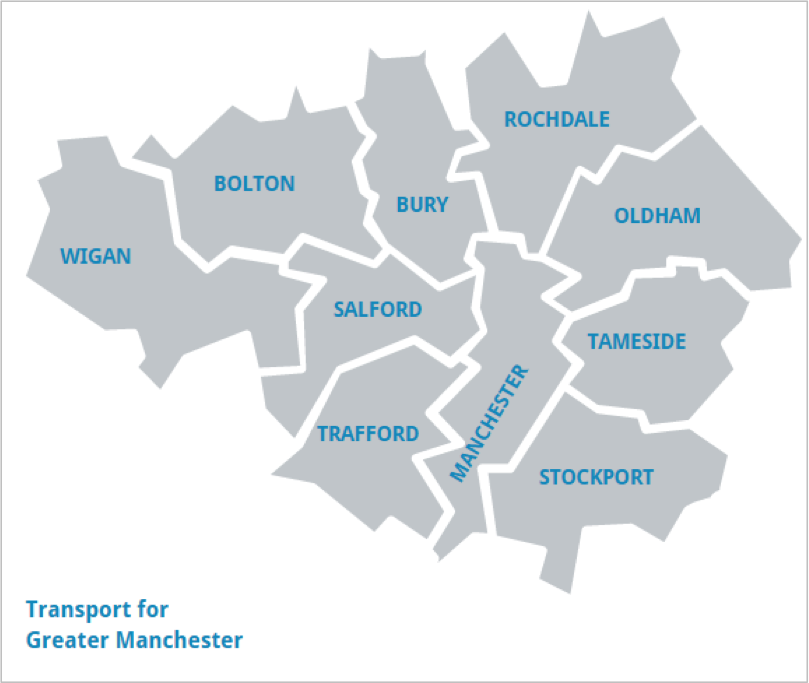
To access the relevant policies for each local authority, click on the relevant area illustrated in the map. Policy and guidance documents from TfGM are available by clicking the TfGM text in the bottom right of the map.
The Contact section is split into two options: questions about the toolkit and questions about planning. Questions about the toolkit can relate to errors on the website or documentation. It is advised that users should examine the technical help throughout the website (see Sections 7 and 8 ) or view the About, Help or Reference sections before consulting TfGM on technical queries about travel planning.
All planning application queries should be addressed to the relevant local authority, based on the list of contacts provided. TfGM cannot respond to queries relating to individual planning applications on behalf of local authorities.
- Previous section "About Travel Plans"
- Next section "Find a Travel Plan"

for Solo Travel Over 50
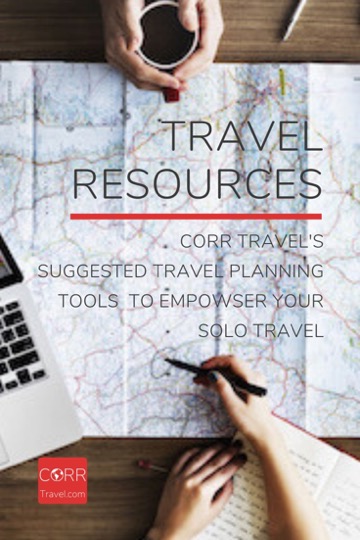
CORR TRAVEL
TRAVEL PLANNERS & TOOLKITS
Shop corr travel planners & toolkits.
Travel planning tools so you don’t miss a thing planning your solo travel. Shop the ultimate travel planners, budget planners, and combination travel toolkits offering a variety of the travel planning tools you need to get you on your way.
Subscribe to the CORR Travel newsletter with your product.
Like these products leave a review below, shop by product type, travel checklists, travel calculators, pro toolkits.
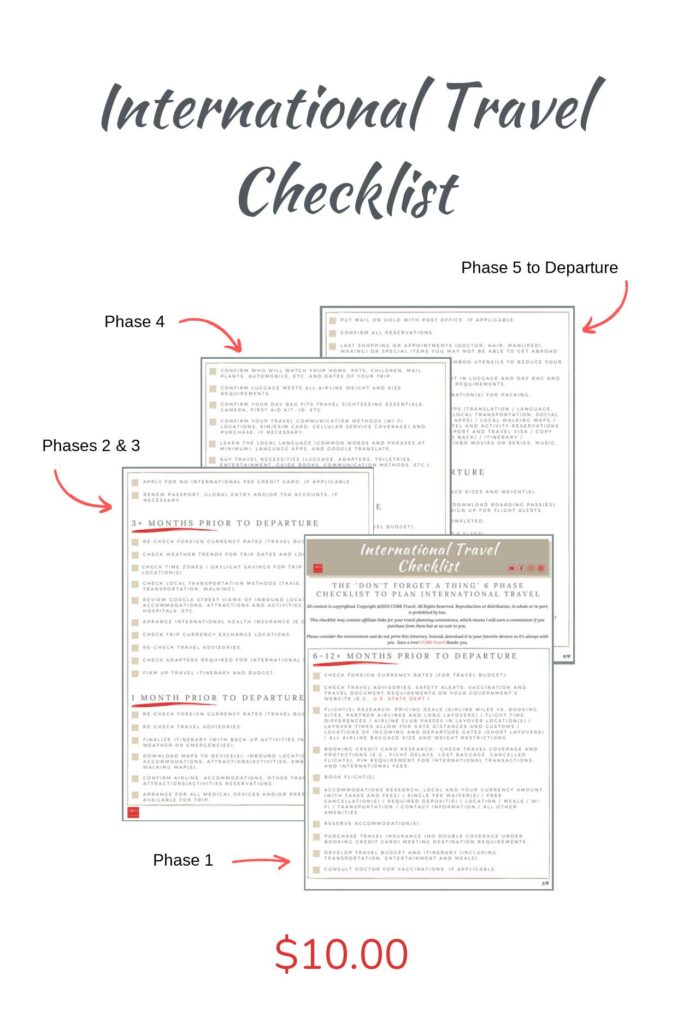
Want to know how I saved thousands of dollars on travel by house sitting through Trusted Housesitters? Use the House Sitting Pro Kit and get all of my tried-and-true hot tips on how to use Trusted Housesitters like a pro. In it you’ll find: the Step-by-Step Guide for Success, How to Set up a Winning Profile, an Application Template you can use for any Trusted Housesitters house sit, and a House and Pet Sit Checklist so you know all of the questions to ask before accepting a sit to ensure its the right sit for you. Plus, you’ll get access to my 2 5% off Trusted Housesitters membership promo code in the House Sitting Pro Kit. Bonus! Get your House Sitting Pro Kit and start working your way to landing those house sitting opportunities in the popular areas, build your winning profile with glowing recommendations, and watch your house sitting network grow so you can save big money on travel like I did.
- Instant PDF download
MORE CORR TRAVEL SHOP
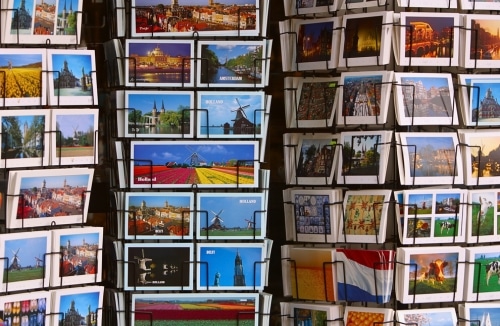
Leave a Reply Cancel reply
Your email address will not be published. Required fields are marked *
Save my name, email, and website in this browser for the next time I comment.

An official website of the United States government
Here’s how you know
Official websites use .gov A .gov website belongs to an official government organization in the United States.
Secure .gov websites use HTTPS A lock ( Lock A locked padlock ) or https:// means you’ve safely connected to the .gov website. Share sensitive information only on official, secure websites.
Travel and Transportation Toolkit
PSC offers self-service tools to obtain information, guidance, and FAQs related to the Travel and Transportation Programs.
Travel and Transportation Job Aids
To determine the tools and training you need to establish eligibility to travel to perform official Government business, visit the Travel and Transportation Job Aids (HHS Microsoft Teams) .
Transit Benefit Program Toolkit
Participants can obtain immediate assistance and resolution to inquiries by clicking the + button to access toolkit resources such as Job Aids and FAQs.
For HHS Employees
- Hint : Browse the "Top 10 FAQs" or use the Search bar to enter keywords related to your role/topic. (i.e. Reports; Transit Coordinator) Relevant FAQs will display in your search results.
- FAQs are available on the Transit Benefits Self-Service Web Portal
- Hint : Reference these FAQs if you work in the National Capital Region and use WMATA and other SmarTrip accepting transit vendors: Metrorail, Metrobus, ART, DASH, Fairfax Connector, Cue, RideON, TheBus, FLASH Bus, DC Circulator, Loudon Country Transit, and Potomac and Rappahannock Transit/PRTC.
- Hint : Use the "Contents" menu and Search bar to locate specific information related to your role/topic.
- Mass Transit Benefits Application Training
- Vanpool Transit Benefits Training
- Bike2Work Benefit Training
For Non-HHS Employees
- GO! card ℠ Frequently Asked Questions (FAQs) for Non-HHS federal employees
- Inquiries related to the transit benefit policy, enrollment, and applications must be directed to your Transit Program Coordinator.
Locating Transit Providers
Find transit providers in your state or local area from the American Public Transportation Association (APTA).
Transit Benefit Program Participant Inquiries
If your inquiry is not addressed in the Transit Benefit Program Toolkit, please contact GO! card SM Support:
[email protected] 301-492-4774
Fleet and Executive Motor Pool Toolkit
- HHS Executive Motor Pool (EMP) Operations and Policy Manual
Fleet Management Resources
- Acquisition Gateway (GSA)
- Alternative Fuels Data Center (DOE)
- Fleet Sustainability Dashboard (DOE)
- Federal Vehicle Standards (GSA)
- Fleet Drive-thru (GSA)
- Greenhouse Gas Equivalencies Calculator (EPA)
- Please note that this is a link to the HHS intranet; you need to be in the system to access it.
- Maintenance Control Center — MCC (GSA)
- Motor Vehicle Management Policy Overview (GSA)
- Planning for Federal Sustainability in the Next Decade (Executive Order – EO 13693)
- Short Term Rental Program (GSA)
- Sustainable Federal Fleets (DOE)
- Skip to main content
- Keyboard shortcuts for audio player

- LISTEN & FOLLOW
- Apple Podcasts
- Google Podcasts
- Amazon Music
Your support helps make our show possible and unlocks access to our sponsor-free feed.
How to plan your dream vacation
Sometimes you crave a vacation — but actually taking one feels out of reach. Maybe you're struggling to find the time or save up the money. Or maybe you just can't seem to launch those plans out of the group chat. Overcome that planning inertia and take the big trip of your dreams. Here's where to start your search, organize your logistics and enjoy yourself.

MARIELLE SEGARRA, HOST:
You're listening to LIFE KIT...
(SOUNDBITE OF MUSIC)
SEGARRA: ...From NPR.
Hey, everybody. It's Marielle. You remember the early part of the pandemic when the days of isolation stretched into months? At night, I would lay on the floor of my apartment with my eyes closed and listen to guided meditations, to try to take myself to a happier place. One time the prompt was something like, picture yourself doing something that brings you great joy. The first thing that popped into my head was an image of me wandering the cobblestone streets of some small European village, probably in France. The sun was shining, and every step I took was a feast for the eyes. Medieval houses, colorful flowers resting in vases on outdoor tables, patisseries with gorgeous pastries in the window, just waiting to be eaten.
I didn't realize until that moment just how much I missed traveling and how badly I wanted to look at something outside of my four walls or the blocks of my neighborhood. The next year, I took a three-week trip to the U.K. and France, and I ate those pastries and wandered until my feet hurt and filled a hole that had been growing inside of me.
Big trips can do that. Lale Arikoglu knows what I'm talking about. She's the articles director at Conde Nast Traveler.
LALE ARIKOGLU: On a really basic level, I think it's just being able to have a break from the crush of regular life, whether that's work or childcare or school, wherever it may be, you know, the opportunity to just take yourself out of your routine and be somewhere else and get to immerse yourself in that place to me is, like, the main draw of it.
SEGARRA: Now, when we talk about a big trip, that could mean different things depending on your travel style and your budget. You know, it might be a long road trip or an extended stay at a cottage in the woods or a multi-city tour on another continent. But it's typically something you save up for and plan months in advance. Lale has a big trip coming up. She's going to Peru.
ARIKOGLU: I've been waiting to do it for a long time. The reason to go there is for a friend's wedding. And now I'm building a trip around it, and it's going to be about ten days long with multi-stops, you know, having to choose multiple places to stay. And logistically, you know, it's actually taking some thought and some planning. One of the things that we're going to do when we're there is hike Machu Picchu. There's a group of us going. And Machu Picchu - it's a dream to see and experience.
SEGARRA: Now, it's easy to get bogged down in trip planning. And it might stop you from booking the thing entirely, but Lale says, do it. It's worth it.
On this episode of LIFE KIT, Lale shares her best tips on planning the big trip of your dreams. We'll talk about where to start your search, what logistical questions you should ask yourself and how to actually relax and enjoy yourself once you're there.
SEGARRA: Let's say I do want to take a big trip, right? I'm feeling that itch to travel, but...
ARIKOGLU: Right.
SEGARRA: ...I don't have a destination in mind yet or a duration. I'm really starting from scratch. Where does the planning start?
ARIKOGLU: When you start the planning, you've really got to think what you want to get out of the trip. You know, If you really just want to decompress and relax and rest, then you probably don't want to do some like multi-stop European city trip, right? You probably don't want to hike Machu Picchu. Perhaps it is that you're incredibly bored of your surroundings, and you need adventure and you need excitement. And therefore, you're going to be thinking of some really different destinations. It might be that you're traveling alone for the first time. You've decided to do a solo trip. You know, where is a place that might feel comfortable for you as a solo traveler, but still feels like it's taking you out of your comfort zone? So I think it's sitting with yourself and thinking, OK, what is, like, the goal here? That's takeaway one. Ask yourself what do you want to get from this? Set the mission of your trip.
It feels like another really important detail at the beginning is budget, right? Like, how much money do you realistically want to spend on this trip or can you afford to spend?
ARIKOGLU: And, you know, that's going to look different for everyone. If we're talking big trips, rarely are they spontaneous, right? You're planning for a long time. So that also allows you to save and finance for it. No, there's lots of great savings apps that can just, you know, that take a little bit of money out of your paycheck every few weeks, and you can kind of start, like, a travel fund that way. I think that's quite a nice way to do it. But I think, you know, you can do a big trip on a budget. It doesn't have to be, I think, a lavish, international trip. I mean, you know, we're going into spring and summer, there are so many incredible national parks to see, there are so many amazing, very diverse, different cities. There's, like, so much on your doorstep, so I think you can really argue, you don't have to cross continents to have a big trip. And so if that feels a more affordable way to get away for a couple of weeks, then, you know, look in your backyard.
SEGARRA: Right. I wonder, too, like, part of budget, besides money, is also time. Like, how much vacation time do you have? Do you have any tips for people who don't have that much vacation time?
ARIKOGLU: So I think if you look at the calendar and you look at where the holiday weekends fall, There are some tricks to being able to kind of, like, turn your limited number of vacation days into - kind of you can stretch it out if you bookend it with a holiday weekend or something like that. But on the flip side, it's also most expensive time to travel, right? There is an argument for choosing shoulder season, so that's not traveling to a destination when it's at its peak. And this is great for your own personal experience, but it's also in terms of helping that destination deal with overtourism, overcrowding. If we're talking about Europe, for example, the summers are getting hotter. So avoiding those really intense, hot, summer seasons can actually be really advantageous for your own travel plans.
SEGARRA: Yeah. That seems like maybe the next thing to consider as you're planning a big trip before you start looking at destinations is what time of year are you looking to travel?
ARIKOGLU: Definitely. And that's more of a luxury for some people because If you're having to navigate school holidays, then you're a little bit more limited. But again, it's sort of when you're thinking about carving out those goals and what you want to get out of the trip. Maybe it's the seasonality that's really important. Maybe it's all you want is hot weather and a beach. You know, if you're planning some summer travel, you could totally flip things on its head and go experience winter somewhere. I went to Patagonia when it was entering into their fall in Chile, and it was a really magnificent time to be there, and it was when New York City was going into spring. It felt like upside-down land to be choosing to do that, and it was so wonderful. It was great.
SEGARRA: Yeah. I think there's a lot of room for creativity there. And also, as you said, like, it opens up more possibilities if you consider going places during the shoulder season.
ARIKOGLU: And you get to be in a place and actually be in the place with the people who live there. One thing in August, if you go to Europe, everyone who lives there has, you know, gone off somewhere else on vacation to escape the heat and the tourists, and so, you know, you're in Rome with just all the other tourists and none of the Romans.
SEGARRA: All right, so takeaway two. Before you land on a destination, think about your constraints. What time of year do you plan to travel? For how long? What budget are you working with? If you're short on time, you can make use of holidays or pick a destination closer to home. If you're short on money, think creatively. You know, maybe you do a road trip through some parks or cities nearby.
SEGARRA: It seems like another thing to consider here is, how much do you like crowds? Because for me, it kind of ruins a trip or an experience if everywhere I go is super crowded. I get very overwhelmed by that and overstimulated.
ARIKOGLU: And it's also, you know, who are the crowds? Because there's been times when I've gone somewhere and I've gone and done the same bucket list site that everyone else is, and you're sort of standing there and you're thinking, What am I actually here for? Well, what is the purpose of this? What am I getting out of it? What am I giving to this destination other than just being another member of the crowd?
SEGARRA: Yeah. I think that's an important question, right? 'Cause, like, we have been talking about what are you looking to get out of it, for the most part. But there's another side to this - right? - and it's what am I giving? And also, what am I taking? Like, am I taking too much from this place?
ARIKOGLU: I think about that a lot. When you're planning, be really thoughtful about where you're spending your money. When you're choosing a hotel, is it a hotel that is locally owned? What restaurants are you booking? Where are you shopping? Where are you buying your souvenirs? You know, I think there's lots of ways to be really thoughtful about, you know, how you spend your money, and that can go into your budgeting, as well.
SEGARRA: I know there are certain places that at a certain time, at least, they said, please, tourists, like, please stop coming or stop coming during this time.
ARIKOGLU: Yeah. When a destination says that, I mean, it's something to be taken so seriously because they're usually destinations that have an infrastructure or an economy that really relies on tourism. So things have to have gotten pretty bad for a destination to say, take a beat, not right now, and listen to that, and, you know, the place will be better for it when you do go see it.
SEGARRA: I picture it as if you were, like, going to - going over, like, a friend's house uninvited, or, like, if they were like, please, today's not good. Like, our whole family's sick, like, we're all throwing up, and then you were still banging on the door, like, hey, what are you doing? Can I come stay over?
ARIKOGLU: I think that is a perfect analogy. Perfect. And no one wants to be that person.
SEGARRA: No.
ARIKOGLU: I'd hate to be that person.
SEGARRA: That'd be weird behavior.
ARIKOGLU: Yeah.
SEGARRA: Takeaway three, travel responsibly. Research the places you're interested in, and make sure they want tourists at the time you're looking to visit. When you're booking, consider putting your money toward the local economy rather than international chains. Also, learn about whatever destination you choose. Be open to the cultural practices and languages there. And be a respectful visitor.
Anything else that people would want to figure out before they start narrowing down or looking at destinations?
ARIKOGLU: I think it's also thinking about who you want to travel with. Someone can be your best friend, but they can be your worst roommate. I think travel's kind of the same, so kind of finding someone to travel with or a group of people to travel with who you're aligned with in the planning stage, rather than when you get there and then you suddenly discover you all want to do different things. So I think communicating right off the back what you all want out of the trip and what you're excited about and also being really honest with each other about finances.
If you're on a group trip, I mean, it's like splitting the bill, but a thousand times worse. And so I think if you can kind of, like, set some parameters at the start and be really honest about what you feel comfortable spending money on because inevitably, there is going to be some people on the trip who want to spend more money on some things than others.
SEGARRA: Yeah. And it seems like that conversation, there should be some form of that before you book anything.
ARIKOGLU: Yes, 100%. And, you know, I think even if you don't feel comfortable doing it, speaking up if something just feels too expensive.
SEGARRA: All right. So takeaway four, figure out who you're traveling with. You might prefer to travel alone, or if you're going with friends, partners, or family, just make sure you're on the same page about what you want from the trip - the pace, the activities and how much money you can spend.
SEGARRA: OK. So it sounds like we've given people a lot of things to consider before they choose a destination. Once they've done this soul searching, how can they start to find destinations that fit those desires and limitations?
ARIKOGLU: For me, part of the fun of travel planning is doing the research, whether it is a trusted travel publication or reading some books you love or going on to - you know, there's, like, a ton of just, like, online communities of people who love swapping travel tips and actually, I think, can be really helpful.
SEGARRA: Yeah. I think it can be helpful maybe to in the brainstorming stage to just, like, not go in too deep but just make a list of places that seem exciting to you and that might fit your parameters. Like, I have a Google Doc, and it's just, like, places that I would be really excited to go.
SEGARRA: When you are considering a destination, how helpful is social media - is - like, seeing where your friends are going or where influencers are going? Is it a good idea to follow those trends?
ARIKOGLU: I think it can be useful in picking things you want to do once you're there, particularly if it's, like, based around, like, big events or openings. You know, we have our best places to go list that runs every year. It could be, like, new train routes, new hiking routes, new museums that have opened, things that are happening in destinations centered around an anniversary. So, you know, kind of consulting those sorts of lists and rounds up as well can be very helpful. But I think, you know, going back to what we were talking about in terms of over tourism or overcrowding - you know, on social media, you will see people at the same spots time and time again. And they're usually spots where just around the corner, there's also something equally beautiful to see.
SEGARRA: Yeah. Like, I remember when Santorini was really popular. And it's like, whew - like, if you could actually see what was going on behind that photo, like, you would hate being there because it's so - it's just way too many people...
ARIKOGLU: Right. Right.
SEGARRA: ...All lining up to take a picture in - against that beautiful backdrop.
ARIKOGLU: Exactly. And, you know, it's Santorini. It's all beautiful. It's all amazing.
SEGARRA: OK. So takeaway five is to choose a destination. And cast a wide net when you're brainstorming 'cause you never know what's going to catch your eye. Also, Lale says, do your best to think outside of the current travel trends. Though you can use them for inspiration.
So once you've got a destination in mind, how can you start to sketch out the details of the trip? And I guess I should say, how much detail do you really need to figure out?
ARIKOGLU: So I was going to say, don't overschedule yourself, and don't overbook yourself. I think I've been guilty of doing that before, and then you realize that you have no downtime. It might seem like you're being really efficient, but you need a little bit of spontaneity on your trip. Don't overschedule. If there are a few key things you really want to do that you feel you will be crushed if you don't get to do it, then book it. Make sure that's arranged all in advance. So maybe it's finding one thing on each day of your trip. That's what you center your day around and you can frame your itinerary around that, but I wouldn't overschedule.
SEGARRA: Yeah. And then I think when you look at these things potentially sketched out on different days, then you say like, you know, that seems too busy. What's the most important to me here? Like, which of these activities do I want to book ahead?
ARIKOGLU: Right. You know, if you're suddenly realizing - you're like, I am cramming a lot in if I try to go to these three places, then choosing which one to let go.
SEGARRA: Yeah. 'Cause that's always a consideration, too. Like, if you're flying somewhere far, you might think, well, I'm already going to Poland, should I also do Germany?
SEGARRA: There's that impulse, you know? Or I'm going to Poland, so I want to see all of Poland. But that can make for a very frenetic kind of trip.
ARIKOGLU: And you wouldn't tell someone who was visiting America to be like, well, you've come all the way to America, so if you're going to New York, then you also need to go to New Orleans.
SEGARRA: Right, right. Exactly. That's Takeaway 6 - keep your schedule light and malleable. Lally recommends picking only one activity to do for each day of your trip and then building a flexible itinerary around those.
You know, it occurs to me that another element of a big trip when I'm going into them - I know that something's going to go awry during it.
ARIKOGLU: Always (laughter).
SEGARRA: Yeah.
SEGARRA: I remember being in Barcelona when I was in college. I went by myself for, like, a week. And I speak Spanish, but it wasn't fluent at the time. And I just got - I just missed being able to easily say what I wanted to say, and I went into, like, a Wendy's or something because I just wanted something kind of American. And I got some chicken nuggets. I couldn't think how to say nuggets in Spanish. Like, I was like, is that even a word, like, in Spanish, or did they just say nuggets? And I just broke and started speaking in English because I was trying to only speak Spanish. And I was like, I give up. Like, can I get some chicken nuggets, please?
ARIKOGLU: The true American in you comes out screaming at chicken nuggets in a foreign McDonald's.
SEGARRA: Yeah, yeah, give me my nuggies.
ARIKOGLU: (Laughter).
SEGARRA: Yeah, I just - like, sometimes you just need to go roll up into a ball and eat your chicken nuggies and be by yourself for a minute and then come back out, you know?
ARIKOGLU: Yeah. I mean, like, travel so much of the time is sort of, like, infantilizing because you're so powerless. But it's, like, the same in an airport. You're just sort of powerless at a certain extent when things go wrong. And I think my approach to it - to sort of very taxing and challenging air travel schedules, with connections and potential miss flights and lost luggage and all the things that come with that - is to sort of just give myself up to the airport gods, and just as soon as I'm, like, through TSA, just be like, what will be will be. I'll get there eventually and just, like, I'm powerless. And that's been, like, for me, quite liberating. And it also means that I'm not the person screaming at some poor gate agent when things go wrong.
SEGARRA: Yeah, it's a moment of - it's actually an opportunity for mindfulness. Like, I think that could even be helpful going into a big trip, to tell yourself, like, something is going to go wrong. Yeah, just keep that in mind.
ARIKOGLU: Oh, my God, so much of travel is about being tired and hungry.
SEGARRA: We're really selling this.
ARIKOGLU: I know.
SEGARRA: (Laughter).
ARIKOGLU: I'm like, my whole job is to travel. It's great.
SEGARRA: Isn't it terrible? Yeah.
SEGARRA: I try to remind myself, like - what is the point? - like, go back to those goals. What is the point of this? It's to have a good experience, to meet those needs, to give myself what I've been craving.
ARIKOGLU: Exactly. And I don't know. This sounds a little cheesy and a little trite, but anyone who gets to travel is really lucky. Ultimately, it's a real privilege that you get to do it. And it's such a freedom and it's such a special thing.Don't make it stressful.
SEGARRA: That's our final takeaway. Something on your trip is bound to go wrong. So once you're there, sit back and try to surrender. After all, traveling in the first place is a treat.
SEGARRA: OK, jet-setters, time for a recap. First, figure out what you want from this vacation. Decide your budget and time constraints. Commit to traveling ethically. Make sure you're aligned with the people you're traveling with. When you choose a destination, cast a wide net and have fun with the research. Don't overschedule yourself, and once you're there, relax and roll with the punches. For more LIFE KIT, check out our other episodes. We've got one on how to find cheap flights and another on how to pack your suitcase like a pro. You can find those at np.org/lifekit. And if you love LIFE KIT and you just cannot get enough, subscribe to our newsletter at np.org/lifekitnewsletter. Also, we love hearing from you, so if you have episode ideas or feedback you want to share, e-mail us at [email protected].
This episode of LIFE KIT was produced by Margaret Cirino. Our visuals editor is Beck Harlan and our digital editor is Malaka Gharib. Meghan Keane is our supervising editor and Beth Donovan is our executive producer. Our production team also includes Andee Tagle, Clare Marie Schneider and Sylvie Douglis. Engineering support comes from Robert Rodriguez. I'm Marielle Segarra. Thanks for listening.
Copyright © 2024 NPR. All rights reserved. Visit our website terms of use and permissions pages at www.npr.org for further information.
NPR transcripts are created on a rush deadline by an NPR contractor. This text may not be in its final form and may be updated or revised in the future. Accuracy and availability may vary. The authoritative record of NPR’s programming is the audio record.

Trip Planning Toolkit
How to use this trip planning toolkit- updated february 2020.
Trip planning can be both exciting and overwhelming. If you’ve never visited the destination before, it can be challenging to know where to start. If you’ve frequented your destination, you may want to find new and exciting things to do or explore a new neighborhood.
We’ve compiled our favorite guides, tips, and tools that we’ve found over the years to create this comprehensive, but ever growing, Trip Planning Toolkit. Whether you’re an experienced traveler or getting ready for your first big trip, you can find resources to help you organize your travel planning process.
It’s time to start planning your next adventure!
We’ve broken down this guide into seven easy steps to plan your trip. Each tab covers essential information on how to: Pick Your Destination, Book Transportation, Plan Your Itinerary, Find Lodging, Pack, Prepare to Depart, and Maximize Your Trip Enjoyment!
Trip Planning Step 1: Pick Your Destination
Believe it or not, picking the destination for our next trip is often one of the hardest parts of the trip planning process! There are so many places that we want to explore, so once we decide we’re going to take another trip, we ask ourselves these questions to narrow down our options:
How much time do we have to travel?
When do we want to go, what is our general budget, what kinds of experiences do we want to have, what’s on our bucket list, our favorite destination planning resources:.
- PlanIt Wandering Destination Guides- Read about our adventures to inspire travels of your own.
- Google Flights Explore – I use this tool especially when we are limited on time and budget as it allows you to search for flights from your home airport based on duration, price, and approximate time frame.
- The Blonde Abroad Destination Guides – Although this blog caters to solo female travel, their beautiful photography and comprehensive guides will inspire any traveler to explore their featured destinations.
- Roundup of Top Travel Destinations of 2020
Trip Planning Step 2: Arrange Transportation
Once we determine where we want to go, generally my next step is to research transportation options.
Pick your mode of transportation
Air Travel – Growing up, air travel was expensive and simply out of reach for any family vacations. In recent years, it seems air travel has become more cost-effective, especially if flying on a discount, no-frills carrier.
Best for: When you’re traveling significant distances, are limited on time, can plan ahead (last minute fares can get expensive, and/or have flexible travel dates (flight prices can vary drastically from day-to-day).
Train/ Bus Travel – While the U.S. isn’t as connected as, say Europe, train and bus travel is still often a viable option for travelers. A train or bus ticket can cost a fraction of a plane ticket and allows you to take in the sights during your journey. (Just be warned that those sights are often interrupted by highways or industrial areas as many passenger trains share lines with freight trains.)
When traveling abroad, many regions, such as Japan or Western Europe, have excellent train travel options, and it’s often more convenient than flying. Be sure to research local options before settling on flight over the train.
Best for: When you’re on a budget, have more time to travel, are uncomfortable with air travel, or want to take in the view while in transit.
Car Travel – Road trips can be a lot of fun and give you the most freedom (both in schedule and mobility) of any of these options.
Tip: If traveling abroad, take some time to research local driving requirements and conditions to make sure you can legally drive there and will be comfortable doing so. Some countries require you to have an international drivers license or may have road conditions you aren’t prepared for. For example, when we rented a car in Iceland in January, the roads were icy and covered in snow drifts. Being from Michigan, we were used to those road conditions, but many other drivers were NOT and were putting themselves and others on the road at risk by not knowing how to handle their vehicle in the snow. Make sure you are a competent and confident driver before getting behind the wheel, especially on unknown roads.
Best for: When you have plenty of time, are on a tight budget, have a reliable vehicle, are traveling with group, and/or are visiting destinations off the beaten path.
Research available itineraries and prices
If our dates our flexible, I use
Consider using points or miles to purchase your tickets
If you’re willing to put in a little time to learn the ins-and-outs of using frequent flyer miles or credit card points to purchase travel, you can sometimes find some great deals. We’re by no means points experts, but we recently cashed in some of our Chase Ultimate Rewards Points and scored two round-trip first class tickets to Japan and only spend $118 out of pocket. There are several blogs and online communities dedicated to points/ miles travel, and saving up points can take time and strategy, so if you’re curious about using them to fund your next adventure, we recommend you start planning now.
Book your tickets
For air travel, as a general rule, I avoid booking Basic Economy fares for three reasons: 1) many airlines don’t allow for any changes, so if we need to modify our flight, we have to book entirely new ticket. 2) You often can’t choose your seat. While that’s not a huge issue on short flights, longer or overseas flights can be miserable if you get stuck in a middle seat or near the restroom. 3) Some airlines will charge you extra for carry-on luggage, negating the price savings if you need to bring more than just a personal item.
Normal 0 false false false EN-US X-NONE X-NONE
Our Favorite Transportation Planning Resources
- Seat Guru – Once you’ve decided on your flight, you’ll want to make sure you pick a good seat
- The Points Guy
- Rome2Rio – Type in two destinations into their search engine to see what travel options are available between two points. We find that Rome2Rio provides more details options than Google Maps, and it includes prices and transit times.
- RoadTrippers – Enter your starting point and final destination, and their site will not only map out suggested routes, but also provide recommendations of places to stop along the way.
Related Posts:
Destination Guides
Trip planning step 3: plan your itinerary.
Building a fun itinerary is my favorite part of trip planning! But if you’re not careful, it’s easy to get carried away and over schedule your trip.
Plan your trip around a couple of ‘Must Have’ Experiences
Plan a maximum of 1-2 experiences for each day. I find that, when I plan more, we usually end up feeling rushed as I’m constantly checking the clock to make sure we don’t miss our next activity. You can always add in additional excursions if you find you have extra time!
Read: How To Plan Your Must Have Experiences
Factor in your lodging location
If I’m not familiar with neighborhoods in my destination, I like to build my itinerary before booking lodging. That way, I can ensure we are staying in the neighborhood to put us in the center of the action.
Get a guidebook, but don’t stop there
- Blogs- Soon after reading my guidebook, I head online to peruse my favorite blogs to review their posts and advice about the destination in question. Luckily for you readers, we’ve compiled the blogs we use to plan each of our trips in our own Destination Guides .
- Pinterest- A quick search on Pinterest can turn up new or under-the-radar blogs, infographics, and tour companies specific to our destination and enable me to ‘pin’ them to read later.
- Friends and Family- Personal recommendations from friends, family, colleagues, or acquaintances can be a great resource when planning a trip! I particularly like talking to people who are repeat visitors or who may have lived in the destination in question. Chances are, they will have recommendations beyond the normal tourist traps.
Don’t try to plan everything
It may be tempting to schedule every moment of your trip to ‘maximize the fun’, but DON’T DO IT. You will run yourself ragged trying to stick to your itinerary.
- Avoid planning meals too far in advance- You won’t always know where you will be during meal times. If traveling several timezones away, you might also find that your body clock is off, and you get hungry at different times of the day than when you would normally eat. The biggest exceptions to planning meals are if a) you want to visit a specific restaurant that requires reservations or b) if you’re traveling as part of a large group , which might also require reservations in advance.
Plot Out Your Itinerary
I like to plug activities, flights, etc. into a calendar so I can see how our plans are laid out. I enter flight, rental car pickups, hotel accommodations as soon as I decide what.This also serves as a way to double check that I’m not inadvertently overbooking us, or worse, planning for the wrong date.
Learn From Our Mistakes : While planning an upcoming trip to Costa Rica , I’d made lodging reservations for the first part of our trip (we wanted to stay in a specific Airbnb that was likely to get booked up) and then waited several weeks to book lodging for the second half of the trip. I got lazy and didn’t add the Airbnb reservation on the calendar and didn’t realize until after I’d made the second half reservations that we were due to check out of Airbnb one day earlier than I had thought! I had inadvertently left us with one night in between reservations where we had nowhere to stay! Fortunately, we found an overnight hiking trip (we get to stay in a cave behind a waterfall!) that fit our itinerary for the open night. However, had I not noticed the gap in reservations until later, we could have been in trouble! Lesson Learned: Always plug activities and reservations into a calendar to ensure there are no gaps or overlaps!
Leave Plenty of Buffer Time
Travel is inherently unpredictable at times, and your plans will get messed up. Flights will get delayed, tours will run long, directions won’t take you to where you want to go. Travel hiccups will happen, and it’s best to leave yourself some wiggle room to deal with them.
Plan A Few Backup Activities
I like to keep a list of ‘if we have time’ activities that didn’t make the Must Have Experience list, but are worth doing if there is extra time. But don’t feel like you need to fill every minute! Sometimes the best vacation memories are made in those ‘in between’ moments when you’re simply doing nothing but taking in your surroundings.
Our Favorite Itinerary Planning Resources
Although each destination is likely going to require some specialized research (blogs, guidebooks, etc.), we usually start our planning with these go-to web resources:
- Culture Trip – Provides great ideas for activities, attractions, and restaurant recommendations with a focus on more ‘local’ and off-the-beaten track options.
- Pinterest – Is a great way to find smaller blogs that list out itinerary ideas for just about every destination imaginable. Try searching for ‘Things to do in Destination’.
- Lonely Plane t- Their guidebooks are some of my favorites, and the LP website offers some great content to help pinpoint activities and attractions.
- Thrillist – While targeted only at large cities, this site provides up-to-date information on upcoming events, recent openings, and other cultural activities.
- Eater – Since most of our trips revolve around food, we often head straight to Eater to find recommendations and maps showing the best places to grab a bite. Be sure to check out their travel tool for suggestions of great food around the world!
- Destination Guides – Visit our destination guides and posts for a listing of destination-specific resources we used to plan each of our trips.
Essential Posts:
- How I Plan A Stress-Free Trip Itinerary: Tips to Avoid Overscheduling Yourself on Your Vacation
- How To Plan Your Must Have Experiences + Free Printable Planning Template
Trip Planning Step 4: Book Lodging
Consider all options (hotels, homeshares, b & b’s, etc.), look for unique lodging experiences, check reviews and recommendations.
If you know someone who has been to your destination, ask where they stayed. If that’s not an option, review sites like TripAdvisor aggregate reviews and can be a great resource to learn about other travelers’ experiences with properties. While I use those reviews to inform my research, I have also learned to take them with a grain of salt. I typically pay closest attention to the most recent reviews, but I also skim through bad ones. Sometimes they are legitimate complaints, other times the reviewer clearly had unrealistic expectations. Normal 0 false false false EN-US X-NONE X-NONE
Pay attention to cancellation policies and hidden fees
Book in advance, but check back for price reductions, make sure your check-out, check-in dates overlap.
If your trip involves multiple destinations where you’re changing lodging during your trip, be sure that you’re checking in to the new hotel on the same day you’re checking out of your prior hotel to avoid any gaps in your lodging.
For example, if you’re checking out of Hotel A on October 7, you’ll want to check in to Hotel B on October 7 as well. (Unless you have an overnight flight or train that you will be sleeping on.) I’ve accidentally booked Hotel B for October 8, only to realize we didn’t have anywhere to sleep on October 7! (We thankfully caught it on time!)
·Our Favorite Lodging Resources
- Hotels.com- Hotels.com is my favorite of third-party booking sites because you can earn 1 night for every 10 stays booked through their site, plus having all my reservations through one service makes it easier to track.
- TripAdvisor – If you’ve ever planned a trip before, chances are you’ve used TripAdvisor. It’s a popular resource for good reason- it’s the go-to place to leave and read reviews on hotel properties, attractions, and activities.
- AirBnB or HomeAway – While I struggle with the ethics of homesharing sites (read more about that here ), I’d be remiss to recommend it as a potential option for your vacation lodging. Homesharing, when done right, can provide you access to unique venues, less-touristy neighborhoods, and can be more economical than traditional hotels.
- HotelTonight – Hotel Tonight works with hotels to sell off excess rooms for steep discounts. The service is only available in major cities, but for last minute trips, it can help you save big money.
- Local Tourism Boards- Although it’s becoming more common for small inns and B&B’s to advertise online, so family-owned businesses don’t have their own online presence. Many local tourism boards do a good job listing accommodations in their area, so consider doing a web search for ‘ YOUR DESTINATION tourism board ‘ to find accommodations in small or remote communities.
Trip Planning Step 5: Pack Your Bags
Bringing the right clothing and gear can make a huge difference on how comfortable you are during your trip. But that doesn’t mean buying a whole new wardrobe before every trip. Read our guides on how to curate your travel wardrobe and gear collection with all the essentials you need to enjoy your trip.
Check the weather
If you’re headed to a destination you’ve never been to, it’s a good idea to check long range or historical weather patterns to get a feel for the climate. Be sure to look up the actual city or region you’re traveling to rather than relying on general country-wide weather reports found in most guidebooks. Climate can differ drastically among regions within the same country or even the same region, especially if you’re traveling in the mountains or near water.
Make your packing list
Pick your luggage, make your shopping list (if needed), check the weather again, pack your bags.
Find our recommendations for essential travel bags here !
Lighten your load
Our favorite vacation packing resources.
- Travel Fashion Girl – This blog features packing lists and recommended items by destination and by season. While her recommendations are stylish and fashion-oriented, they are also practical and usually affordable!
- Pack Hacker – Independent reviews of virtually any kind of luggage and travel gear.
- REI Checklists – These gear lists are great for more active vacations to ensure you bring all the necessary equipment to stay comfortable and safe while hiking or camping.
- Weather Underground – While you could use any of your favorite weather forecast services, I find Weather Underground to be pretty accurate, and I like their ‘History’ function to view weather patterns.
- Four Essential Bags Every Traveler Needs
- Six In-Flight Essentials I Never Fly Without
- The Best Websites for Women’s Travel Clothing
- The Best Trip Packing Lists For Every Destination
Trip Planning Step 6: Prepare to Depart
You’re so close to your much-deserved vacation, and there are just a few more steps to take before you depart to ensure a stress-free trip:
Confirm reservations
Double check that you have all of your essentials, get your car a checkup (if driving), leave yourself extra time to get to the airport (if flying).
If flying, do yourself a favor, and give yourself plenty of time to get to the airport in case you hit traffic. Getting stuck in traffic and panicking that you’ll miss your flight is an awful way to start your vacation. (We’ve done this more than once.)
Bonus Tip: If you’re parking your car at the airport, take a picture of the area (or marker) for when you return. I’ve tried writing the location down, but I’ve lost the slip of paper more than once. Pictures last longer. 🙂
Prep your home
Set your out-of-office message, send a copy of your itinerary to a trusted friend or family member, our favorite departure prep resources.
- USPS Mail Hold – We recommend holding your mail if you’re gone for longer than a weekend or if you’re expecting packages to be delivered while you’re away.
- Waze App – Track real-time travel delays and find alternative routes to avoid getting stuck in a traffic jam.
- Flight Aware – Sign up for text or email alerts to track potential flight delays. If your airline provides the option to receive alerts directly from them, we recommend using that service that too!
- Vacation Home Prep Checklist – This extensive list outlines how to prepare your home before you leave for vacation so you needn’t worry about your house while you’re away.
Trip Planning Step 7: Bon Voyage!
You’ve planned and planned, and now it’s time to enjoy your vacation! These resources will help you avoid misadventures and get the most out of your trip!

Learn to accept the unexpected
We can almost guarantee that, despite careful planning, something will go at least slightly awry on your trip. Flights get delayed, an attraction might be closed, weather may not cooperate with your plans. While it’s ok to be a little disappointed when things don’t go your way, try not to let it derail your entire trip. Most trips can be salvaged if you’re willing to be flexible and find enjoyment (and even a little humor) in having to switch your plans.
Put your phone away
Smartphones can be a great asset while traveling, but try not to spend too much time staring at your phone. While it’s tempting to document your trip, share pics with friends, or even do some trip planning research on the fly, we recommend limiting screen time while you’re on vacation. When you’re staring at your phone, you end up missing the experience that you’ve planned (and paid!) for.
Stay Healthy
Nothing ruins a trip faster than getting sick! Protect your self from unwanted germs from fellow travelers by eating well, getting plenty of sleep, and staying hydrated. I also always carry disinfecting wipes with me to quickly clean airplane armrests, belt buckles, and other germ-magnets. Find more tips on staying healthy while traveling here.
Allow yourself to check out
While we’d love for everyone to be able to totally leave work pressures behind while on vacation, depending on your work and family responsibilities, taking a vacation might not necessarily mean that you can totally disconnect. However, it’s a good idea to set some boundaries and at least disconnect somewhat from work and/or family back home so you can still recharge on your trip.
Traveling often means stepping outside of your comfort zone, but we encourage our fellow travelers to not compromise their safety! We recommend reviewing this great list of 25 Important Travel Safety Tips from the Expert Vagabond , and we also abide by these travel safety rules:
- Don’t carry large sums of cash. We can always stop at an ATM if we need more.
- Listen to your gut.
- Don’t compromise safety to save money. If you’re on a budget, it might be tempting to save a few bucks by staying in a less than ideal neighborhood or try walking home after a night out. While those situations may work out fine, no amount of cost savings is worth risking your safety. Listen to your gut, and if it doesn’t seem safe to walk back to your hotel in the wee hours of the morning, just take a taxi.
- Give your itinerary to a family member of friend. We always send a copy of our Trip Planner to our parents before we depart so they know our itinerary and where we’ll be staying.
- If traveling alone, share your phone’s location with a trusted friend or family member. When I’m traveling solo for work, I turn on my Google Location Sharing settings so Mike can see where I am in case of an emergency. Find My Friends will also work if you’re an iPhone user!
- Avoid posting vacation pics and details on social media.
- Why I’m Taking Fewer Pictures On Our Next Trip: Stepping Out From Behind the Lens to Create Vacation Memories
More Planning Resources

Checklists & Templates
Stay organized with printable tools.

No products in the cart.
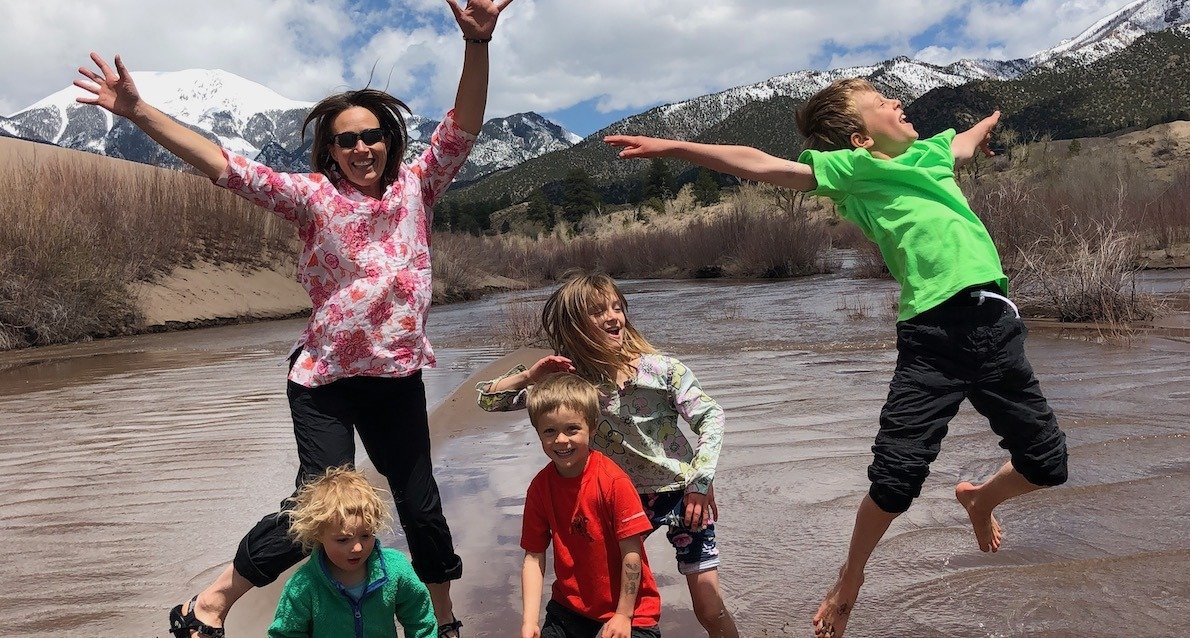
Family Vacation Planner (+Free Printable Template)
NOTE*** The content on this page may contain affiliate links, we may make a commission. And, as an Amazon Associate, we earn from qualifying purchases. More information: disclosure page .
Even though I was a seasoned traveler before having children, planning family travel is a whole different game. I had to learn to become an expert family vacation planner for a large family. That’s why we created this ultimate family vacation planner with a free printable planning template – to help you plan the perfect family vacation.
Just the logistics of moving a large family from one destination to the next is complicated – add flights and car rental and accommodation or RV road trip, campgrounds. Yikes! I needed an itinerary that I could print and fill in the blanks every time – and so do you.
But the process can be smooth and you can have fantastic family vacations with this ultimate family vacation planner template ! This article is meant to be used with the free printable template. Each step can be recorded on the template once you download it.
In addition, I have added a Google Doc planning template for cooperatively planning your vacation or sharing your itinerary with others.

Gone were the days of pick a location, buy a ticket, reserve a hotel and throw some stuff in a backpack. Family travel requires more planning, taking others into account.
Seriously when I was in college, my Dad worked for the airlines and I didn’t even buy a ticket. My brother and I just showed up and the airport, list ourselves on the standby list, and off we went. Sometimes calling home from a totally different location than we were supposed to be.
Like when we got bumped off a flight to Tokyo and opted for Manila Philippines instead. Yeah, probably not going to do that with my baby and toddler in tow.
1. Keep a Family Vacation Bucket List
As the lead family vacation planner, you should always be looking to the future. Creating a family travel bucket list will help keep the whole family inspired and looking forward to traveling together.
Did you know – looking forward to fun times together as well as remember the good times is actually good for your health? We wrote about why family vacations are important and the science to prove it.
The actual planning process can be very stressful though. So keeping a list of destinations everyone dreams of will give you the motivation to power through and even enjoy the vacation planning process.
Look on Pinterest, YouTube, google search, and magazines for inspiration. We keep Pinterest boards for vacation destination ideas in addition to tips and tricks.
Or pull out the globe for a fun lesson in geography. Keep your ideas organized in a folder, on the computer, in a notebook or on an Ap. Just don’t bury it.
Ready to go? Don’t forget to download our free printable to keep your ideas organized.
2. Travel Companions – Decide Who is Traveling
Once you are ready to start planning the next vacation. The first thing to decide is who will be going on this family vacation together. Will it be just an immediate family? We travel with extended family so much that sometimes Charles and I just have to close the doors on certain trips and just bend together as a family.
- Immediate family only
- Should you i nvite extended family
- Will friends be joining the fun?
If you do decide to invite extended family or friends go ahead and ask them along. You can do this now and include them in the destination and travel dates decision. Or wait until you have dates and a destination to invite them to come along.
Either way, you will want to have an idea of the headcount before moving forward with plans.
3. How to Choose a Vacation Destination
Its time to pull out the family travel bucket list or start a lively group discussion around a map about where to go. You will need a destination, which might be a country or a general route to follow through states if you are doing a road trip.
This is the time to start filling in your family vacation printable in a notebook or use the vacation planning template in Google Docs that we created. We have been using Google Docs templates to collaboratively plan travel with extended family.
To use the free copy of the Google Doc template – use this link to access the Google Doc.
Then save it to your own drive. From there, share it with others. If you want them involved in the planning process – share it with the rights to edit. If you want to simply give them a copy of your itinerary – share as a read only file.
When I plan a travel itinerary I pick a county – say Japan- or general area for a road trip – say Oregon/Washinton Coast
. If I know I just want to go to one place and stay put on a beach – the Florida Keys for example- thats OK too.
If you are looking for international family destinations we have an article with 22 amazing places to travel in the world . We asked expert travel bloggers to reccomend places to travel that they had been to with toddlers.
Once I have a destination established, I wait for the more detailed itinerary till I decide on the specific locations and activities.
4. Choose Your Travel Dates
Once you have decided on a location the next step is travel dates. The more people in the traveling group the more difficult this step will become.
The destination may have an impact on this decision. Or you may have chosen the destination based on the time of year you plan to travel. Like the family beach vacation in the middle winter.
First decide the length of the trip – days, weeks, months, forever?
Get out the calendar and everyone’s schedule and try to layout a couple of dates that meet the requirements. This might not be possible but it will help with getting the best deals.
I suggest using an interactive way to do this. Get everyone in the room together, to meet their requirements.
Of course, if you are planning with immediate family only, this meeting will likely be you and your spouse comparing schedules.
5. Do it Yourself vs Travel Agency vs Vacation Package
You might be an avid Do It Yourself family like we are. For just about, everything including travel and this will be a given. (Although, Charles and I have gone on a last-minute all-inclusive Hawaii vacation package when it popped up in my email.
I know some busy families like to contact a tour company or find and vacation package. You will still need to prov ide information to work with them to build an itinerary and outings.
If you do everything yourself you can customize your vacation exactly the way you want it and possibly save money. We have many travel resources available for the Do It Yourself style travel:
- How to find the cheapest flights for your family
- Rules for Flying with a Baby and Toddler
- How to find the best kid-friendly accommodations
- Tips for planning a road trip with toddlers
- 22 amazing places to travel in the world
- Ultimate packing checklist for family travel
6. Plan Your Travel Budget

You may already have money saved and a budget set or just starting to create a budget and savings plan.
You need to know “How much will it cost for the trip?” There are books and a quick internet search for cost $ per day per person will be helpful to you.
Make sure to include the cost of flights, transportation, cost per day for accommodation, cost per day food and activities and special experiences. Google Flights and other search engines are a good way to get a quick estimate.
Our budget is generally tight on family vacations so we plan on just one or two special experiences or outings. Things we have splurged on are whale watching, the bioluminescent bay in Puerto Rico, a Hawk Walk in Ireland.
7. Save Money for the Travel Fund

This amazing trip will need to be funded and likely from savings – money you already saved or money that you will be saving for travel.
So you will need to start saving money, earning more money, collecting points and miles or a combination of all everything to get to your goal.
We have many resources to help you save money. Some of our articles that I think will be helpful to you are:
- How to Save $10,000 in 6 months
- Ways to save money for a family vacation
- How to save money on groceries
- Ninja m ind tricks to help you save money fast
8. Things to Do – How to Choose Vacation Activities
Get the whole family involved and discuss the important experiences with your travel companions. The kids love dreaming about all the fun they will have on vacation.

This is a collaborative effort and can be done around the kitchen table, over the phone, on FaceTime or Skype, or with collaborative software. Google Docs or Mac file sharing are my go-to file-sharing tools for collaborating on an itinerary with my husband or extended family.
Let each family member choose destinations and things to see that are important to them.
Of course, the whole trip can’t revolve around one kid’s dreams so let each person choose one or two ideas. At this point, you might not actually know the available activities so I have everyone choose a category.
For example, on our multigenerational trip to Costa Rica, everyone chose an animal they wanted to see.
Charles was the sloth, mine was the cayman, my Dad the toucan, the 2-year-old wanted to see a monkey, and so on.
Later, in the planning phase, we choose activities and accommodations based on the most likely place to see each animal.
Other categories can be location or geography – beach, sand dunes, mountains. Activities – horseback riding, museums, art gallery, zip line.
9. Outline the Itinerary for your Family Vacation
Start to build an itinerary based on the locations that each family member chose and a wish list of activities.
At this point, your itinerary will look like a rough outline of travel dates, destinations, and some notes about transportation, accommodations, and activities.
You can use paper and pencil, a word processor, cooperative that looks like Google docs or Mac share, or an app like trip it.
Get out a map and other resources and research things to do and see in the area. Here are some ideas of places to look for activities for your family.
- Blogs, Google
- Trip Advisor
- Tourism boards
- Family and friend
- Social media
- Guide books
Compare to the list of ideas for the trip to everyone’s must-have experience.

At this point, I use sticky notes on the map with the location and to do. With a physical map and notes right on it, I can see the lay of the land.
You can now decide the best route to take for the vacation. This might include one or more locations on your itinerary.
Armed with your travel dates, accommodations, and vacation activities you can create an outline of an itinerary based on a number of days and locations.
10. Book your Travel
Now gets the fun part. Actually booking and reserving travel for your family trip.
Knowing the traveling group, destination, travel dates will help you know which mode of transportation will be the right choice. You probably will need a combination of driving, flying, riding the train, or taking a boat to arrive at your final destination.
To research and book flights good tools include google flights, Skyscanner, Travelocity, kayak, and the airline’s website. Kiwi is another great site to search on that I have found good deals.
If you are using miles and points you will be looking at the airline’s website or researching partner airlines.
I search for all the above sites and if I have time, I wait for a good deal and book when the time is right. You can enter alerts on various sites to let you know of a price drop.
Then it’s time to book your travel! This for me is one of the most stressful parts of the family travel planning process!
Hitting the buy button is really unnerving for me when I am looking at thousands of dollars in airline tickets and bring to get just the right itinerary to suit my family.
The travel to your destination will anchor the family vacation so it’s time to start filling in a finalized itinerary. The destination, travel mode, and dates will be the first things to fill in.
Don’t forget to record the tickets information on the itinerary: flight number, company, depart, arrive, points FF numbers, and login information.
11. Book Accommodations with Best Value
Armed with the outline of your itinerary in hand and notes on your map, it’s time to book accommodation. This might be one place to stay the whole time or many locations as your move around.
You will face some challenges like the number of people in the group, your budget, and the needs of each group member.
There are 6 or more of us that travel together so one hotel room is often too small and against the rules. We have stayed in hotel suites, rented houses, rented an RV, stayed in hostels, tent camped, drove our own RV, and more. On a trip to Canada, CanaDream was having a special on RV rental that ended up being the same cost as a van rental and hotels.

We wrote this article on finding the best kid-friendly accommodations for your vacation. and this one on 9 Frugal Ways to Rent an RV for Cheap
So be creative for the best value and fits everyone and their needs. My favorite site to find a variety of options for accommodation is booking.com. The search function is easy to use, there are no booking fees and free cancellation on most rooms.
Some ideas for accommodations include:
- Hotels
- Rental Property
- AirBnB , VRBO or Apartment
- RV rentals, RVShare , Outdoorsy
- Campgrounds- check at the national ( forest service ), state, city and county levels.
- Cruise lines
- Overnight parking for RV trips
And I always check reviews of the location on internet search, TripAdvisor, and more.
I look at some good reviews and then head to the bad ones and see if any of them matters to me. Someone complaining about kids having fun – that’s not negative – that’s my kind of place!
I have canceled more than one place where the reviews were of unsanitary or unsafe conditions.
Once the accommodations are booked make sure to record the details in your itinerary.
Dates, contact information, confirmation #, price, check-in and out times. Print and save a copy of your confirmation and directions to the location. You will want a hard copy when your phone dies or something happens to the cell service and you’re trying to check in or verify the price.
12. Getting Around – Book Local Transportation
If you are on an amazing road trip your local transportation will have your own car for local transportation. Otherwise, you will need a way to get around and see this on your amazing adventure.
In the US, cars are the standard mode of transportation but there are more ways to get around. Think about the location, culture, and options available.
We traveled around Ireland with 6 of us and reserved a car with enough seats. Cars in Europe are small, so they really meant seats 6 people or 4 and luggage but not both. Here are some ideas:
- Walking, biking if you are in a city center
- Train, Subway or light rail
- Bus tickets
- Boat or Ferry
Check the cancelation policies. Car rentals in the US tend to be very flexible and do not even gather credit card information. It’s worth booking right away and canceling later if you find a better deal.
And don’t forget to write it all down in your itinerary and print hard copies.
13. Plan Your Family Vacation Activities
For me, this is where the fun starts. Charles loves flying and looking through pictures of really cool places to stay. It’s actually stressful for me and I am relieved to start moving on planning things to do and see on vacation.
Look back at the list of what everyone wants to see and do and the map of all the locations. Research fun activities within these parameters that you have.

Consider your family travel rhythm. We move slowly in the morning – leaving before 9 Am is difficult. We like to alternate days between big adventures and staying close to our temporary “home.”
Of course, traveling on a budget you must take cost into consideration. We generally have one day or activity we splurge on that is more expensive and be really frugal on the other activities. That’s why we love playgrounds – free fun! If you can afford a formal tour, it’s a great way to fit the things in you want to see and get a local’s expertise on the area.
Make sure to schedule a recovery day after a long travel day or a big adventure. Something a little more low-key and relaxing.
Book any tours or plan activities and record important information on the itinerary.
Have a backup plan and extra activities on the list too.
On my itinerary, I have information about the planned activity for the day and a list of backup activities. My backups are other things that seem interesting and options for inclement weather.
Add your ideas and any reservations to your itinerary for the day that it is planned. Don’t forget to bring out hard copies of the ideas.
14. Places to Eat and Drink
When traveling with kids, meals, snacks, and rest stops have to be planned. Leaving a plan for dinner until everyone is hungry is a recipe for disaster.
Take into account will you will be traveling. If you will be in the car you can take more supplies than if you are traveling by subway or foot.
In general, we like to plan breakfast at the hotel, rental, or in our RV and lunch is a packed picnic.
Grammy and I made sandwiches on the tailgate of our rental car almost every day on our Ireland trip.
Dinner is where we are more creative and might be dinner at a restaurant, home-cooked at the RV, take out on the beach, or with friends, we are visiting. That’s our rhythm but of course, we are flexible too.
And I always have snacks on hand to head off meltdowns. If we are out sightseeing I carry a backpack or a bag on the stroller with food and drink.
Think about your rhythm and budget. Cooking at your temporary home (even in a hotel room) and on lunch on the road is cheaper and sometimes quicker than taking a crew of 4, 5, 6, or more in a restaurant. Don’t forget with a big group you may need reservations.
Write notes on your itinerary about restaurants, picnics, street vendors, and even 7-11 in Japan.
If you get caught off guard and need to find a restaurant fast, TripAdvisor has a cool feature that will let you know the “highest rated restaurants near me.”
Tools to use when looking for local places to eat include:
- Trip advisor, blogs, google, Pinterest
- family and fiends, social media
- Hotel receptionist, other accommodation contact, tour guides
At this point, most of the itinerary should be filled in. You can keep the file and add more details. Make sure to have all the details in a location easy to access on your family vacation. You will need the details to plan each day and you can add notes about each location. Your notes will already be organized for your arrival home.
Since your travel is coming soon you need to start preparing all of your plans and documents.
15. Check passport and visa requirements
- Get one now – processing times and wait time can be longer than expected
If you are traveling internationally and need a passport you need to start the process right away. Wait time for the US can be 2 to 3 months. Follow this process for US passports.
- Check that your passport will be valid for 6 months on return
Each country has its own entry requirements for the validity of passports. Some countries require that a passport be valid for at least six months from the date of entry others in Europe require 3 months.
- Check the Visa requirements
Some countries require visas for people to enter the country. And the requirements for each country are different so make sure to check visa requirements and get one if necessary.
- Know the rules for flying with a baby and toddlers
The rules for flying with a baby can vary based on the country you are in, the airline you are flying, and other factors. We have a comprehensive guide to the rules and policies you need to know when flying with a baby.
16. Health and immunization requirements
Travel vaccines or immunizations are shots that travelers travel to areas of the world to protect them from illness.
Travel vaccines fall into two categories, recommended and required.
For example, some countries in Africa and South America require proof of the yellow fever vaccine before entering the country.
The vaccines you need to get before traveling will depend on where you plan to travel and your own health. Check the World Health Organization or the CDC in the US for more information.
Read more in our article about Travel Fever and How to Stay Healthy on Vacation
17. Arrange for Travel Insurance
Insurance coverage changes when you are traveling. Your family may need some additional coverage for travel-related emergencies and expenses. Double-check with your health and car insurance companies what will be covered during your trip.
Then decide what additional covers you need and arrange for travel insurance. Roadside services such as AAA or RV insurance are useful when traveling by car or RV for your family vacation.
Buy family travel insurance that will cover any travel-related emergencies that could arise. Short-term travel insurance is available to purchase and covers expenses of family travel such as sick kids, trip interruption or cancellation, evacuation, car rental.
Here is a good review of family travel insurance .
18. Make Copies of Important Travel Documents
In this digital age, you still need to have hard copies of important documents while traveling. Even when on a family vacation close to home or a road trip you should have hard copies of important travel documents.
The US state department recommends making 2 copies of each in case of emergency. Hopefully will never need to visit an embassy to replace a passport but activities with kids might require a birth certificate.
Even something as simple as taking our 8-year-old to get her ears pierced in our home state required a birth certificate that we didn’t have. The experience ended in tears.
Here is a list of important travel documents that you should have copies of on a family vacation.
- Passport and Visa
- An extra passport picture to expedite replacement
- Consent for Travel with Minors
- Travel insurance
- Driver’s license or international driving permit
- Health information including insurance, doctors contact, prescriptions, allergies,
- Credit cards
- Travel itinerary
- Airline tickets
- Rail passes and transportation documents
- Hotel or lodging reservation confirmations
- Car rental reservation confirmation
- Cruise tickets
- Vaccination certificates
You may not need all the above important travel documents. If you are on a road trip close to home you won’t need a visa but you will need birth certificates and driver’s licenses.
19. Phone and Internet Access
Before you leave home make sure you think about and have a plan for phone and internet access.
Depending on where you travel cell service coverage and the internet will vary in availability and reliability.
Hotels frequently have internet access as well as internet cafes and libraries. In an RV, camping or boat internet access may not be available but you can arrange for mobile options before leaving home.
20. How to Access Money while Traveling
A family vacation will require money and sometimes reloading the funds. Although you have saved money for travel you should not travel with all that cash in hand.
Take a small amount of cash that you might need and some for emergencies and figure out how to access money while traveling on your adventure.
As far as I know, you can still get traveler’s cheques but with so many other modern options, I don’t know anyone who uses these anymore. Credit cards, debit cards, and prepaid currency cards are much better options.
ATMs are everywhere and a much better way to access funds on your vacation. Prepaid currency cards are another option.
One more note – make sure you have enough money in the correct bank account. You don’t want to be stuck on a family vacation trying to access money and no money in the bank!
21. Preparing to Leave Home
Preparing your home life for your departure is important too! So don’t forget to prepare your home and regular life.
Make arrangements for any home maintenance such as lawn and garden care. Let your neighbors know of your family travel plans and any people that might be coming by the house to help.
Make sure bills are up to date and automate anything that needs to be paid while away. Turn on auto-response on emails.
22. Finalize House and Pet Sitting Arrangements
I am actually terrible at this step and put it off way too long. Good house sitters or pet sitters are hard to come by and their schedule can be really full.
Try out a pet sitter before you leave on an extended vacation. A couple of days or walks to see how they interact with the pets.
On a 3 week vacation to Costa Rica, we were scrambling to figure out if the dogs were being taken care of. Not something you want to worry about on a fun family vacation.
23. Packing for Your Trip with Kids
I have been traveling forever and I can tell you a little preparation goes a long way in packing for a family vacation with kids. Read our packing checklist here
Back in the day, I stayed up late the night before travel, threw some clothes in a bag, and headed off the airport the next day. When I transitioned to mom/family travel coordinator that method didn’t work anymore.

Instead of waiting till the last minute, I started to ask, when should I start to pack for a family vacation? It seems that 2 weeks before the family trip is a good timeframe to start planning what to pack. Although longer trips might require purchasing more supplies and you should get to work much sooner.
Start by thinking of the number of days, the weather, the activities, and the dress code for each activity. Will you do laundry along the way? Will stores be available or do you plan to buy new clothes while on vacation? You should plan on doing laundry based on your accommodations.
After some experience in large family travel, I started following a standard packing checklist. I fill in the number and type of outfits and check them off as they get packed. As I get the packing finalized, I use sticky notes on top of each pile with notes about missing items.
The optimal situation is If you have a dedicated space to start packing. I start laying things out in the guest room on the bed. When this room is not available I have set up a long table in a space that is off-limits to kids. The key here is a separate space and off-limits to the kids.
It’s madding to lay something out and turn around and the piles are mixed up or a favorite shirt is now being worn and sticky.
My luggage system includes
- check through luggage that goes under the plane or in the trunk of the car
- Bags for en route travel. Each kid has a carry on bag or backpack with extra clothes, jammies. For road trips, I might separate the jammies into a bag that I have easy access to.
- A cooler with snacks and food for travel. Depending on the amount of time we travel this generally includes lunch or other meals too.
- A larger cooler with more food for road trips if we are stopping at hotels or food in the RV fridge
- Separate electronics bags and camera equipment

Start with packing the luggage that will hold the majority of your clothes and the necessities. I love cubes and ziplock bags for separating clothes into kids, outfits, or days depending on the plans.
After that, I move to the en-route travel bags. Everything gets laid out and packed into the bags.
24. Prep for Your Return Home

In the excitement of planning for your upcoming family vacation don’t forget to plan for your return. When you arrive home exhausted from your adventure, having things in order at home will make your transition back to normal life much easier.
Here are some of my best tips to make life easier when you return home:
- Clean the house or my favorite – arrange for a cleaner to come while you are gone
- Put baking soda or vinegar in the toilets
- Clean out the fridge and wash the shelves
- Leave a meal or two in the freezer/fridge ready for your return home
- Stock non-perishable items
- Leave notes of what to do when you get home – like turn up the water heater and adjust the heat
- Turn down the heat, down the water heater, check appliances
- check in with neighbors, leave a key
- Close up windows and lights off – one time my neighbor came to turn off the 6 lights!
25. Confirm Flights and Check in Online
Once I failed to check-in online and rather show up at the airport with 3 kids and 6 months pregnant. Which led to 2 days on airport floors – you can read about it in our bio.
The night before travel double check your flights, check-in online, check the first night accommodations, gas, and fluids in the car, check the weather.
More than once, I failed to check the weather when a big winter storm was slamming right in my travel path.
Most of all get everyone to bed early and have a good night’s rest before heading out on your family travel adventure! Racing around the night before traveling just stresses the whole family out and makes it hard to rest – I know. The kids are already excited and maybe a little nervous so slow down and set a relaxed rhythm for the night.
Final Thoughts on this detailed step-by-step family vacation planning guide.
After reading through this whole comprehensive guide to planning family travel, I hope you are ready to get going on your next trip!
Don’t forget all the resources we have created for you:
- Family vacation planning printable template and checklist
- Packing for an RV Vacation
- Google Docs vacation planning template
- The ultimate printable packing checklist for your next vacation
Let me know if you can think of anything I missed in this detailed family vacation planner. What are your favorite tips for planning family travel?
Similar Posts

RV Camping Rules In Maine: Here’s What You Need To Know
If you’re planning your first RV trip to Maine, you should know that the state has specific rules pertaining to campers. In general, camping in a tent, recreational vehicle, or any camping unit is allowed in Maine’s public lands and state parks.

17 Best Campgrounds For Toddlers
Going outdoors and exploring nature is a fun experience that can bring your family closer together. But going out on vacation and camping with your kids, especially toddlers, can be extra challenging as there are many considerations you should keep in mind. You must check important details like the campground’s amenities and kiddie activities, as…
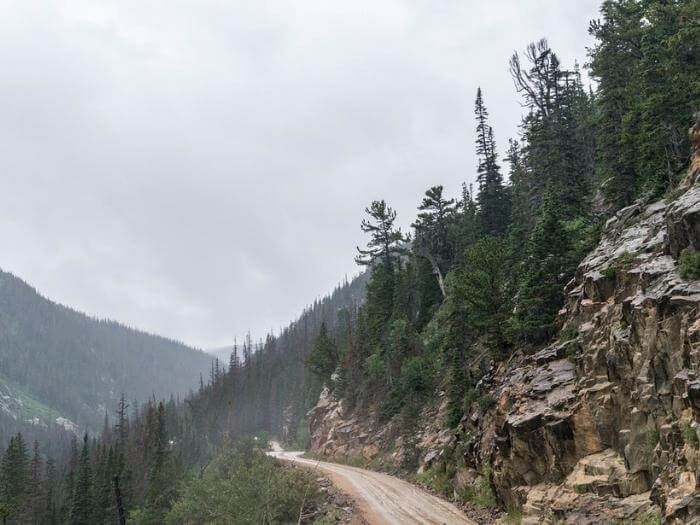
Roads to Avoid in Colorado with an RV (and Which to Drive Instead)
Here are the scariest roads to drive in an RV in Colorado. You won’t believe these roads exist. You’ll be even more surprised that there are still people who choose to drive an RV here.

11 Best Pet-Friendly Campgrounds in Connecticut
There are numerous campgrounds located in Connecticut. It is well-known for its shorelines, rich deep woods, and amazing views. This in turn has caused many private campgrounds to sprawl out, taking advantage of the beautiful sights and providing any would-be campers with the opportunity to not only relax but have fun with the numerous amenities…

18 Practical Tips for Flying with an Infant
Flying with an infant? Follow these practical tips for easier travel with your baby. Planning and packing, airline rules, and inflight advice.
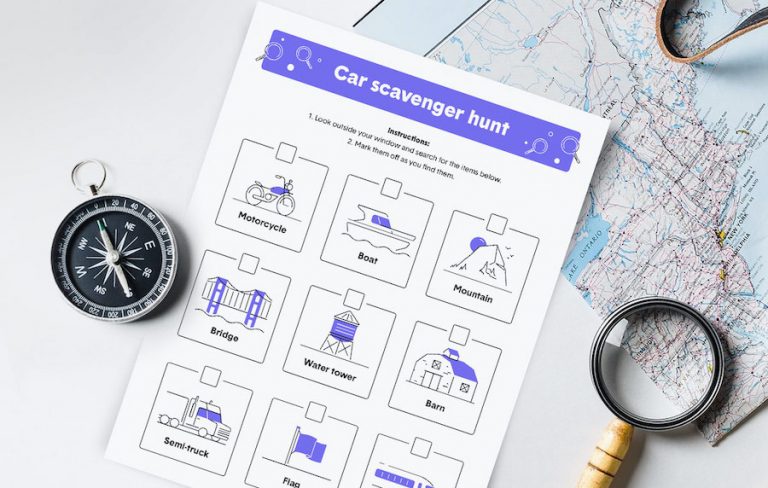
How to Make a DIY Travel Binder for Kids (+Free Printables)
A travel binder is a great way to encourage a love for travel at any age. Use these printable and fully customize your own binder with games and activities your kids love.
Thanks for the tip of creating an itinerary of all the locations for planning a family vacation. I agree that having savings specifically for the travel fund and earning more money is crucial to have the best vacation experience. My youngest sister just graduated high school, so the whole family is taking a dream vacation around the country and I decided to go to Pittsburgh because I am a huge Steelers fan. We want to make the trip amazing and hopefully, we can find some good car rental companies that accommodate our whole family.
Wow sounds like a fun adventure with the whole family. We travel with extended family all the time – which makes us quite a large group of 6 kids plus grandparents.
Leave a Reply Cancel reply
Your email address will not be published. Required fields are marked *
This site uses Akismet to reduce spam. Learn how your comment data is processed .
Mission Trip Planning Toolkit
Whether you’re getting ready for your first mission trip, or you’ve participated in many trips, it’s important to be prepared. This toolkit guides you through the mission trip planning process and equips you with tools to use on your trip and after you come home. Resources include travel tips, devotions, fundraising advice, cultural awareness training, and more.
Looking for help with mission trip planning during the pandemic?
Preparing your team, mission trip planning checklist.
Use this checklist to stay on schedule while planning your mission trip.
Read this section
Meetings you should have before your mission trip.
Six pre-trip meetings your team should have and a suggested agenda for each one.
Mission Trip Team Building Activities
Building strong relationships with the people on your mission trip team is an important part of trip preparation. Here are some ideas for building trust.
Mission Trip Skills Survey Template [Download]
This editable skills survey template can help you get a sense of the gifts and abilities your mission trip team has so that you know the ways you’re equipped to serve together.
Download the survey template
Connecting mission with faith, spiritual preparation for your mission trip.
Here are some steps you can take as a team to prepare spiritually for your mission experience.
Devotions and Bible Study Suggestions
Mission trip devotions (including a set you can read on Faithward for free ) and suggestions for group and personal devotional time during your mission trip.
Mission Trip Prayer Journal [Downloadable Template]
Download and print prayer booklets for your mission trip team to use for prayer, reflection, and devotions during your mission trip.
Download for free
How to foster lasting spiritual growth.
Advice for cultivating spiritual growth on your mission trip that impacts people’s faith after they come home.
Fundraising and budgeting
Mission trip fundraising ideas.
Creative ideas to help you and your team raise support for your mission trip.
How to Write a Mission Trip Fundraising Letter
This step-by-step guide shows you how to write a fundraising letter from start to finish and includes a sample letter.
Making Your Mission Trip Budget
A breakdown of costs you may need to account for in your mission trip budget.
Travel and culture
How to prepare for cross-cultural experiences.
Strategies, resources, and activities to help you and your team increase your cultural awareness and agility before your trip.
How to be a Good Guest on Short-term Mission Trips
Follow these tips to be a hospitable guest to the community hosting you.
Travel Safety and Packing Tips
Guidance on what you should pack and how to travel safely for trips within North America and internationally.
Church participation
How to involve your church in your trip.
Your church may not all be on your trip with you, but there are ways that members can participate.
Coming home from your trip
Mission trip team debriefing guide.
How to process your mission trip during the trip, at the end of the trip, and after you come home.
How to Share Your Mission Trip Experience
Suggestions for sharing your mission trip experience with your church, friends, and family.
Want more mission trip planning support?
© Reformed Church Press

An official website of the United States government
Here’s how you know
Official websites use .gov A .gov website belongs to an official government organization in the United States.
Secure .gov websites use HTTPS A lock ( ) or https:// means you’ve safely connected to the .gov website. Share sensitive information only on official, secure websites.

- Explore sell to government
- Ways you can sell to government
- How to access contract opportunities
- Conduct market research
- Register your business
- Certify as a small business
- Become a schedule holder
- Market your business
- Research active solicitations
- Respond to a solicitation
- What to expect during the award process
- Comply with contractual requirements
- Handle contract modifications
- Monitor past performance evaluations
- Explore real estate
- 3D-4D building information modeling
- Art in architecture | Fine arts
- Computer-aided design standards
- Commissioning
- Design excellence
- Engineering
- Project management information system
- Spatial data management
- Facilities operations
- Smart buildings
- Tenant services
- Utility services
- Water quality management
- Explore historic buildings
- Heritage tourism
- Historic preservation policy, tools and resources
- Historic building stewardship
- Videos, pictures, posters and more
- NEPA implementation
- Courthouse program
- Land ports of entry
- Prospectus library
- Regional buildings
- Renting property
- Visiting public buildings
- Real property disposal
- Reimbursable services (RWA)
- Rental policy and procedures
- Site selection and relocation
- For businesses seeking opportunities
- For federal customers
- For workers in federal buildings
- Explore policy and regulations
- Acquisition management policy
- Aviation management policy
- Information technology policy
- Real property management policy
- Relocation management policy
- Travel management policy
- Vehicle management policy
- Federal acquisition regulations
- Federal management regulations
- Federal travel regulations
- GSA acquisition manual
- Managing the federal rulemaking process
- Explore small business
- Explore business models
- Research the federal market
- Forecast of contracting opportunities
- Events and contacts
- Explore travel
- Per diem rates
- Transportation (airfare rates, POV rates, etc.)
- State tax exemption
- Travel charge card
- Conferences and meetings
- E-gov travel service (ETS)
- Travel category schedule
- Federal travel regulation
- Travel policy
- Explore technology
- Cloud computing services
- Cybersecurity products and services
- Data center services
- Hardware products and services
- Professional IT services
- Software products and services
- Telecommunications and network services
- Work with small businesses
- Governmentwide acquisition contracts
- MAS information technology
- Software purchase agreements
- Cybersecurity
- Digital strategy
- Emerging citizen technology
- Federal identity, credentials, and access management
- Mobile government
- Technology modernization fund
- Explore about us
- Annual reports
- Mission and strategic goals
- Role in presidential transitions
- Get an internship
- Launch your career
- Elevate your professional career
- Discover special hiring paths
- Events and training
- Agency blog
- Congressional testimony
- GSA does that podcast
- News releases
- Leadership directory
- Staff directory
- Office of the administrator
- Federal Acquisition Service
- Public Buildings Service
- Staff offices
- Board of Contract Appeals
- Office of Inspector General
- Region 1 | New England
- Region 2 | Northeast and Caribbean
- Region 3 | Mid-Atlantic
- Region 4 | Southeast Sunbelt
- Region 5 | Great Lakes
- Region 6 | Heartland
- Region 7 | Greater Southwest
- Region 8 | Rocky Mountain
- Region 9 | Pacific Rim
- Region 10 | Northwest/Arctic
- Region 11 | National Capital Region
- Per Diem Lookup
Travel Tools
For federal travelers. Find and book hotel rooms for government travel.
Travel Card Training
For purchase card/travel card holders and program coordinators. Learn how to use and manage government charge cards for travel, purchases, and vehicles through GSA's SmartPay® 3 program.
Per Diem Rates
For federal travelers. Search current per diem rates for lodging, meals, and incidental expenses (M&IE) for government travel.
PER DIEM LOOK-UP
1 choose a location.
Error, The Per Diem API is not responding. Please try again later.
No results could be found for the location you've entered.
Rates for Alaska, Hawaii, U.S. Territories and Possessions are set by the Department of Defense .
Rates for foreign countries are set by the State Department .
2 Choose a date
Rates are available between 10/1/2021 and 09/30/2024.
The End Date of your trip can not occur before the Start Date.
Traveler reimbursement is based on the location of the work activities and not the accommodations, unless lodging is not available at the work activity, then the agency may authorize the rate where lodging is obtained.
Unless otherwise specified, the per diem locality is defined as "all locations within, or entirely surrounded by, the corporate limits of the key city, including independent entities located within those boundaries."
Per diem localities with county definitions shall include "all locations within, or entirely surrounded by, the corporate limits of the key city as well as the boundaries of the listed counties, including independent entities located within the boundaries of the key city and the listed counties (unless otherwise listed separately)."
When a military installation or Government - related facility(whether or not specifically named) is located partially within more than one city or county boundary, the applicable per diem rate for the entire installation or facility is the higher of the rates which apply to the cities and / or counties, even though part(s) of such activities may be located outside the defined per diem locality.
Cookies on GOV.UK
We use some essential cookies to make this website work.
We’d like to set additional cookies to understand how you use GOV.UK, remember your settings and improve government services.
We also use cookies set by other sites to help us deliver content from their services.
You have accepted additional cookies. You can change your cookie settings at any time.
You have rejected additional cookies. You can change your cookie settings at any time.
- Driving and road transport
- Cycling and walking
Active Travel England: planning application assessment toolkit
Allows local planning authorities to gather evidence and assess the active travel merits for a development proposal.
Applies to England
This file may not be suitable for users of assistive technology.
Active Travel England planning application assessment toolkit: checklist user manual
PDF , 555 KB , 29 pages
The planning application assessment toolkit helps to gather evidence and assess the active travel merits – walking, wheeling and cycling – of a development proposal. It should be used by local authority planning and transport officers in conjunction with the applicant.
When making a planning application assessment, you should also refer to:
- Active Travel England: development management
- Active Travel England: sustainable development advice notes
A user manual and a tutorial video have been produced to help you understand how to complete the assessment.
Active Travel England planning toolkit tutorial video
The planning application assessment toolkit has been updated.
First published.
Is this page useful?
- Yes this page is useful
- No this page is not useful
Help us improve GOV.UK
Don’t include personal or financial information like your National Insurance number or credit card details.
To help us improve GOV.UK, we’d like to know more about your visit today. We’ll send you a link to a feedback form. It will take only 2 minutes to fill in. Don’t worry we won’t send you spam or share your email address with anyone.
My itinerary
This is a free demo version of our mapping software.
Create an account to save your current itinerary and get access to all our features.
Otherwise your data will be automatically deleted after one week.

Travel Plan Toolkit
- What is a Travel Plan?
- Do I need a Travel Plan?
- Why would I need a Travel Plan?
- When would I need a Travel Plan?
- What happens to my Travel Plan?
- Supporting initiatives
- Policy vault
- Best practice
- Useful links
- Example measures
- Jargon-buster
- Introduction
- The Travel Planning process
- Registration and Sign-in
- About Travel Plans
- Find a Travel Plan
- Implement a Travel Plan
- Design a Travel Plan
- Assess a Travel Plan
- Frequently Asked Questions
- Home Page - where do I start
3.1 Where do I start?
The homepage for the toolkit is divided into six key areas:

- Anybody who is new to travel planning, or is uncertain whether their site will qualify or benefit from a Travel Plan, should consult the About section.
- Those looking for background planning information or reference material about travel planning should access the Resources section.
- The toolkit will allow people to search for Travel Plans previously completed on this system. This will be available through the Find section.
- Anyone who has access to a previously completed Travel Plan and wants guidance on how to apply it on site should access the Implement section.
- Any individuals or companies who want to create and manage their own Travel Plans should click on the Design section (log in details required – see Section 4).
- Any local authorities who want to review and manage Travel Plans in their area should go to the Assess section (log in details required – see Section 4 ).
3.2 Navigation
In addition to the six key areas identified in the previous section, several other navigation features are available on both the home page and throughout the rest of the toolkit.

- Link to TfGM homepage – links to the homepage of TfGM.
- Registration and sign-in – provides links to your user account (if registered), as well as access to the registration and sign-in areas (see Section4).
- Menu navigation bar – includes links to the six key areas of the website, as well as access to the toolkit homepage and help documentation. Access to sub-menus is provided alongside headings with a down arrow (▼) where available (see image below).
- Legal agreements and contacts – provides access to the legal agreements underpinning the use of the toolkit and links to key contacts.
- Links to local authority pages – The toolkit has been developed in partnership with all 10 local authorities in Greater Manchester. Links to each authority are provided at the bottom of the page.
- Previous section "The Travel Planning process"
- Next section "Registration and Sign-on"
- Format Type
- Learning Modules
- Interactives
- Credit Type
- Participation Certificate

- AMA Ed Hub >
- AMA STEPS Forward >

AMA STEPS Forward ® presents actionable, practical toolkits and customizable resources that you can use to successfully implement meaningful and transformative change in your practice or organization. See How it Works
- Practice Innovation Topics
- Time-Saving Strategies
- Physician Burnout
- Future of Health
- Behavioral Health Integration
- EHR Improvements
- Patient-Centered Care
- Leadership and Culture
- Private Practice
- explore all topics
- Core Workflow Toolkits
- Annual Prescription Renewal
- Daily Huddles
- Team Meetings
- Team Documentation
- In-Basket Management
- Pre-Visit Lab Testing
- Pre-Visit Planning
- Expanded Rooming and Discharge Protocols
See More About
Disclaimer: AMA STEPS Forward® content is provided for informational purposes only, is believed to be current and accurate at the time of posting, and is not intended as, and should not be construed to be, legal, financial, medical, or consulting advice. Physicians and other users should seek competent legal, financial, medical, and consulting advice. AMA STEPS Forward® content provides information on commercial products, processes, and services for informational purposes only. The AMA does not endorse or recommend any commercial products, processes, or services and mention of the same in AMA STEPS Forward® content is not an endorsement or recommendation. The AMA hereby disclaims all express and implied warranties of any kind related to any third-party content or offering. The AMA expressly disclaims all liability for damages of any kind arising out of use, reference to, or reliance on AMA STEPS Forward® content.
About the AMA Professional Satisfaction and Practice Sustainability Group
The AMA Professional Satisfaction and Practice Sustainability group is committed to making the patient–physician relationship more valued than paperwork, technology an asset and not a burden, and physician burnout a thing of the past. We are focused on improving—and setting a positive future path for—the operational, financial, and technological aspects of a physician's practice. Learn more .
Disclaimer: AMA STEPS Forward ® content is provided for informational purposes only, is believed to be current and accurate at the time of posting, and is not intended as, and should not be construed to be, legal, financial, medical, or consulting advice. Physicians and other users should seek competent legal, financial, medical, and consulting advice. AMA STEPS Forward ® content provides information on commercial products, processes, and services for informational purposes only. The AMA does not endorse or recommend any commercial products, processes, or services and mention of the same in AMA STEPS Forward ® content is not an endorsement or recommendation. The AMA hereby disclaims all express and implied warranties of any kind related to any third-party content or offering. The AMA expressly disclaims all liability for damages of any kind arising out of use, reference to, or reliance on AMA STEPS Forward ® content.
Participation Statement: Upon completion of this activity, learners will receive a Participation Certificate.
AMA Membership provides:
- Unlimited CME and MOC from JN Learning
- Full-access to JAMA Network (print journal, online and audio subscription)
Sign in to access
Sign in to customize your interests, my saved searches.
You currently have no searches saved.
My Saved Courses
You currently have no courses saved.
Name Your Search
Sign in to save your search, lookup an activity, purchase access.
- Share full article
Advertisement
Road Trips: How to Plan an Accessible Getaway

By Syren Nagakyrie
Planning an accessible road trip is getting a little easier for people with disabilities. There are more resources created by and for the disability community, and the tourism industry is starting to recognize the value of accessible travel. As a disabled, chronically ill, neurodivergent person, I take road trips every year and have learned some tips and tricks along the way.
Renting a vehicle
Most major car companies offer adaptive driving devices for their vehicles at no additional cost. Enterprise , for example, offers hand controls, left foot accelerators, pedal extenders and spinner knobs to facilitate steering. Budget can provide hand controls, spinner knobs, a panoramic mirror, swivel seats and transfer boards. Be prepared to request adaptive devices at least three business days in advance.
For a wheelchair-accessible van with a ramp or a lift, rent from a mobility company like BraunAbility , one of the largest builders of wheelchair-accessible vans in the country, with rentals at many locations. MobilityWorks , an accessible-vehicle and adaptive-equipment dealer, has rental locations in 34 states. AccessibleGO , which offers a one-stop shop for adapted rental cars and wheelchair-accessible vans, has agreements with 100 wheelchair van rental locations nationwide; request a quote on their website. For accessibleGO’s rental cars, you can request hand controls and a spinner knob at checkout.
Route planning
You can use Google Maps, Waze and MapQuest for initial accessibility research using photos and street view. Google Maps provides directions for some wheelchair-accessible pedestrian and transit routes.
Sites such as Roadtrippers and Furkot can plot an entire itinerary. While these websites are not disability specific, they are invaluable tools. (Roadtrippers does have a wheelchair-accessible check box in the search function.) You can filter by types of destinations such as national parks or museums, and search for hotels and campgrounds. Furkot allows you to input how long you want to drive each day, whether you want to travel on Interstate highways or take more scenic roads. The app will determine the best route and length of time between stops, and suggest where to stay overnight.
Finding lodging
While hotels and other accommodations are required to comply with the Americans With Disabilities Act, many hotels do not meet all accessibility needs. Most of the booking sites list hotels with accessible rooms for those with mobility, hearing and vision needs, but this information is not always verified. Do additional research on review sites and look for photos. Hyatt, Marriott, Hilton and Fairmont hotels offer allergy-friendly and scent-free rooms in some locations. Call the hotel to verify accessibility and to make sure a specific room is reserved for you.
Vacation rentals are typically not required to be A.D.A. compliant, but some do provide accessibility information. Airbnb recently rolled out an adapted category with accessibility search features and homes that have been scanned for accessibility. Review photos and contact the host for more information. Some hosts will make accommodations, such as changing the cleaning supplies or shifting furniture, but document your request using the in-app messaging system so that customer service can help if you run into issues.
Wheel the World is an accessible travel agency offering bookings at over 3,000 verified accessible hotels in the United States. The hotels have been reviewed in person by trained assessors; only those that meet the criteria are listed. Sign up as a disabled traveler or a companion and complete a personal profile that includes options for a variety of disabilities and accessibility needs. The site will provide listings that match your profile with partial, adequate and outstanding match options.
Food and medication
There are a variety of options to keep food or medication cold while traveling. Electric coolers can plug into your vehicle’s 12-volt outlet, but pay attention to the type of cooling mechanism — the less expensive versions are usually thermoelectric and will cool only to about 30 degrees below ambient temperature (if it is 70 degrees in the car, it will cool to 40 degrees). Compressor coolers are more expensive but maintain normal refrigerated temperatures.
Many hotels provide mini-refrigerators. When you know you will be stopping somewhere with a fridge almost every night, layer large ice packs and supplies in a cooler, then top them with another insulating layer like a cooling bag. This keeps everything cold for a couple of days at a time.
It’s also a good idea to travel with a single-burner cooktop — electric to use inside, or propane to use at rest areas and campgrounds — and a camp mess kit so that you can safely cook meals.
Some of the best apps to find food, restaurants and grocery stores that accommodate dietary needs are Fig for allergy-specific options, Happy Cow for vegan-friendly options and Find Me Gluten Free for celiac-safe spots. Add your favorite options to the route-planning app so that you know where to stop.
Finding activities
In addition to the apps mentioned in the route-planning section, state and local tourism organizations are good sources for accessible destinations.
National parks and monuments, which are required to meet federal accessibility guidelines, typically have visitor centers and recreation sites with accessible features. Each park website has information, as well as programs and services within the park. While accessibility varies, you can usually find information on wheelchair-accessible trails and campsites, tactile and audio features, assistive listening devices, and American Sign Language interpreters.
At state parks, accessibility features may not be consistent, but you can usually find some information on each park’s website.
Apps like AllTrails list wheelchair-friendly trails across the country, but the information may not be verified, so contact the park or land manager for verification. Among the parks with notable accessible trails are Redwood National and State Parks, North Cascades National Park, Badlands National Park, and Great Smoky Mountains National Park .
Syren Nagakyrie, the founder of the nonprofit Disabled Hikers and the author of “The Disabled Hiker’s Guide to Western Washington and Oregon” and “The Disabled Hiker’s Guide to Northern California,” among other guidebooks, leads group hikes and conducts assessments throughout the United States.
Open Up Your World
Considering a trip, or just some armchair traveling here are some ideas..
52 Places: Why do we travel? For food, culture, adventure, natural beauty? Our 2024 list has all those elements, and more .
Mumbai: Spend 36 hours in this fast-changing Indian city by exploring ancient caves, catching a concert in a former textile mill and feasting on mangoes.
Kyoto: The Japanese city’s dry gardens offer spots for quiet contemplation in an increasingly overtouristed destination.
Iceland: The country markets itself as a destination to see the northern lights. But they can be elusive, as one writer recently found .
Texas: Canoeing the Rio Grande near Big Bend National Park can be magical. But as the river dries, it’s getting harder to find where a boat will actually float .

IMAGES
VIDEO
COMMENTS
A Travel Plan is a document that lays out the strategy for managing travel to and from a site. Travel Plans are an effective tool to increase the accessibility of a site, particularly by sustainable modes, to reduce the impact of a site on the surrounding road network and to manage the use of local car parking capacity. Travel Plans have two ...
Welcome to the TfGM Travel Plan Toolkit. This toolkit helps developer, consultants, businesses and local authorities in Greater Manchester to create, review and implement effective, sustainable Travel Plans as part of the planning process for an employment site.The toolkit explains what travel plans are, provides a search facility and information on resources, as well as a process for Travel ...
The Travel Plan Toolkit website uses cookies. By continuing to access the site you are agreeing to their use. learn more about these cookies close message learn more about these cookies close message
Skyscanner is one of the best tools to help you get great travel deals by finding the best routes, best flights and best time to score your best travel experience. The app also provides recommendations for last-minute trips with pricing for a variety of destinations. Skyscanner is free to download. Rai blogs at A Rai of Light.
Planit wandering travel planning toolkit. Tips, templates, checklists...everything you need to plan your next adventure. More Posts. Where We've Traveled. Sometimes picking your next destination is the hardest part of planning a vacation! See where we've traveled so far and review our Destination Guides for inspiration and learn where we went ...
The toolkit facilitates interaction between designers and assessors so that Travel Plan submissions are produced, assessed and if necessary redrafted by the appropriate party. 4.4 User areas Once registered and logged in, you will be able to access your user account settings through the user icon:
This area of the website will act as a library for any supporting information relating to travel planning that can be used for reference while you are working on a Travel Plan. ... The Contact section is split into two options: questions about the toolkit and questions about planning. Questions about the toolkit can relate to errors on the ...
TRAVEL PRO TOOLKITS. Plan your trip to Europe with ease. This Europe Travel Planner Toolkit covers all you need to know on what and how to pack for peak or should season travel in Europe (with either checked-on luggage or carry-on only), the travel documents you need to prepare and share before departure, travel apps to download, essential solo ...
PSC's Travel and Transportation Toolkit offers self-service tools that include information, guidance, and FAQs on the travel and transportation programs. ... Planning for Federal Sustainability in the Next Decade (Executive Order - EO 13693) Short Term Rental Program (GSA)
Transport for NSW has developed a Travel Plan Toolkit designed for people or groups responsible for developing and implementing a Travel Plan. This toolkit provides the steps, templates and resources for developing a comprehensive Travel Plan. Throughout the Toolkit there are links to resources and more detailed information which can also be ...
22-Minute Listen. Playlist. Download. Embed. Sometimes you crave a vacation — but actually taking one feels out of reach. Maybe you're struggling to find the time or save up the money. Or maybe ...
How To Use This Trip Planning Toolkit- Updated February 2020. Trip planning can be both exciting and overwhelming. If you've never visited the destination before, it can be challenging to know where to start. If you've frequented your destination, you may want to find new and exciting things to do or explore a new neighborhood.
Travel Plan Toolkit for Hospital Precincts Introduction Travel Demand Management is the application of a focused, data led strategy that seeks to manage demand on transport networks by redistributing journeys to other modes, times, routes or removing the journey altogether. It is most effectively applied when there is an
That's why we created this ultimate family vacation planner with a free printable planning template - to help you plan the perfect family vacation. Just the logistics of moving a large family from one destination to the next is complicated - add flights and car rental and accommodation or RV road trip, campgrounds. Yikes!
Whether you're getting ready for your first mission trip, or you've participated in many trips, it's important to be prepared. This toolkit guides you through the mission trip planning process and equips you with tools to use on your trip and after you come home. Resources include travel tips, devotions, fundraising advice, cultural ...
Travel Tools. FedRooms. For federal travelers. Find and book hotel rooms for government travel. Travel Card Training. For purchase card/travel card holders and program coordinators. Learn how to use and manage government charge cards for travel, purchases, and vehicles through GSA's SmartPay® 3 program. Per Diem Rates. For federal travelers.
Are you feeling overwhelmed keeping track of all your UK travel plans? Do you have lists of things to do, pack and buy? Do you have hotel bookings and tours and tickets for events in multiple places? If that sounds like you (and believe me that was me too!) I have created the perfect solution! Our UK Travel Toolkit is the perfect solution enabling you to keep track of everything in one place.
A Travel Plan Coordinator should be appointed who is responsible for keeping the Travel Plan up to date and ensuring actions are carried out. The Travel Plan Coordinator's responsibilities include: Taking ownership of the action plan to ensure it is implemented. Carrying out travel surveys to keep up to date with current commuting patterns.
Active Travel Toolbox: a collection of guides, tools and case studies to help local authorities deliver walking and cycling schemes in their area. Active Mode Appraisal Toolkit: a spreadsheet ...
The planning application assessment toolkit helps to gather evidence and assess the active travel merits - walking, wheeling and cycling - of a development proposal. It should be used by local ...
Add your travel destinations on a map, select your transport modes, visualize and share your itinerary for free. My itinerary This is a free demo version of our mapping software. Create an account to save your current itinerary and get access to all our features. ...
The toolkit will allow people to search for Travel Plans previously completed on this system. This will be available through the Find section. Anyone who has access to a previously completed Travel Plan and wants guidance on how to apply it on site should access the Implement section. Any individuals or companies who want to create and manage ...
This toolkit will help learners identify types of telehealth services, employ efficient telehealth workflows, and understand the impact of key regulations. ... Strategic planning to integrate telehealth solutions is imperative in a small practice or a large hospital system. A successful telehealth program requires planning both clinical and non ...
April 12, 2024, 5:00 a.m. ET. Planning an accessible road trip is getting a little easier for people with disabilities. There are more resources created by and for the disability community, and ...